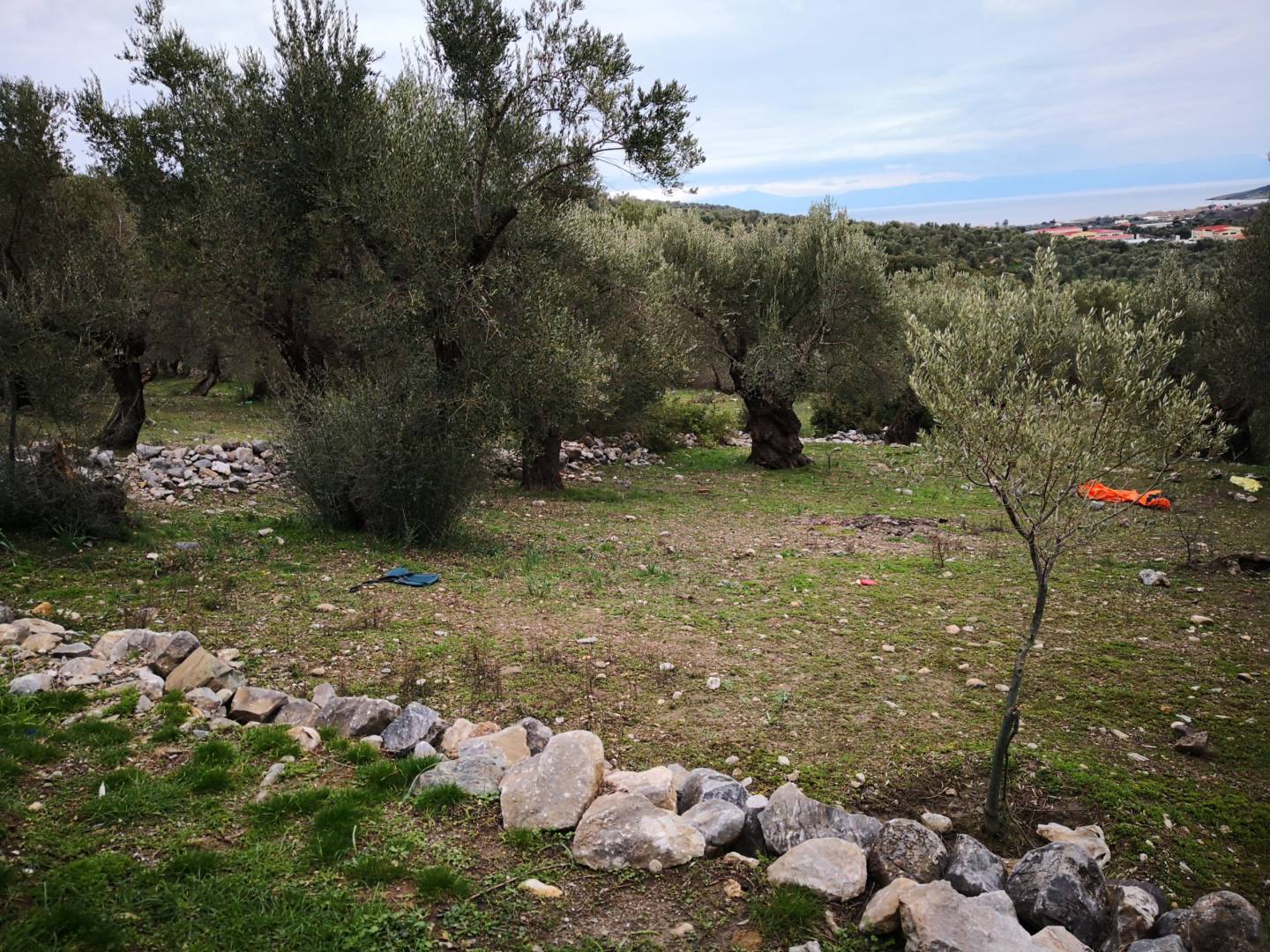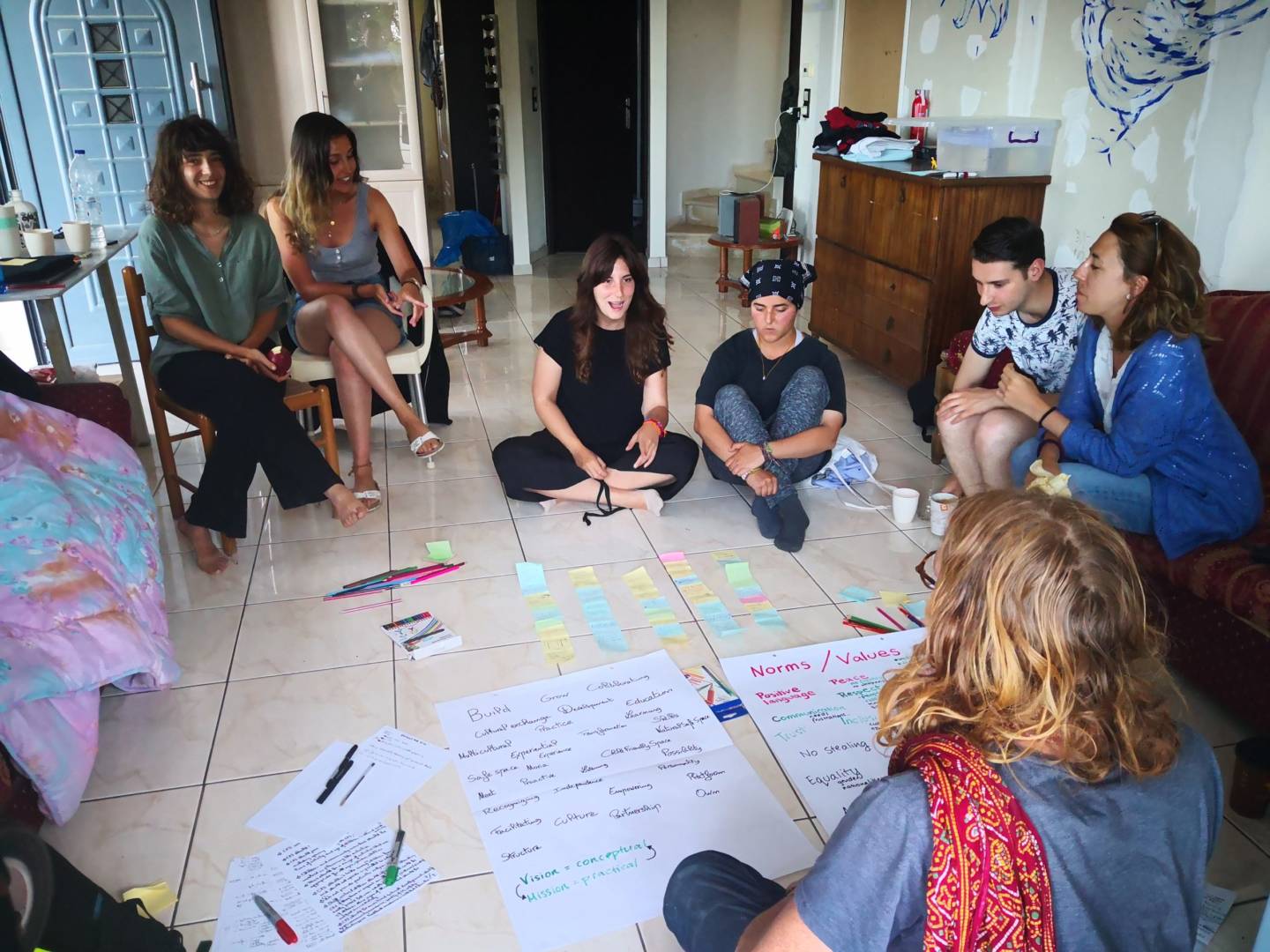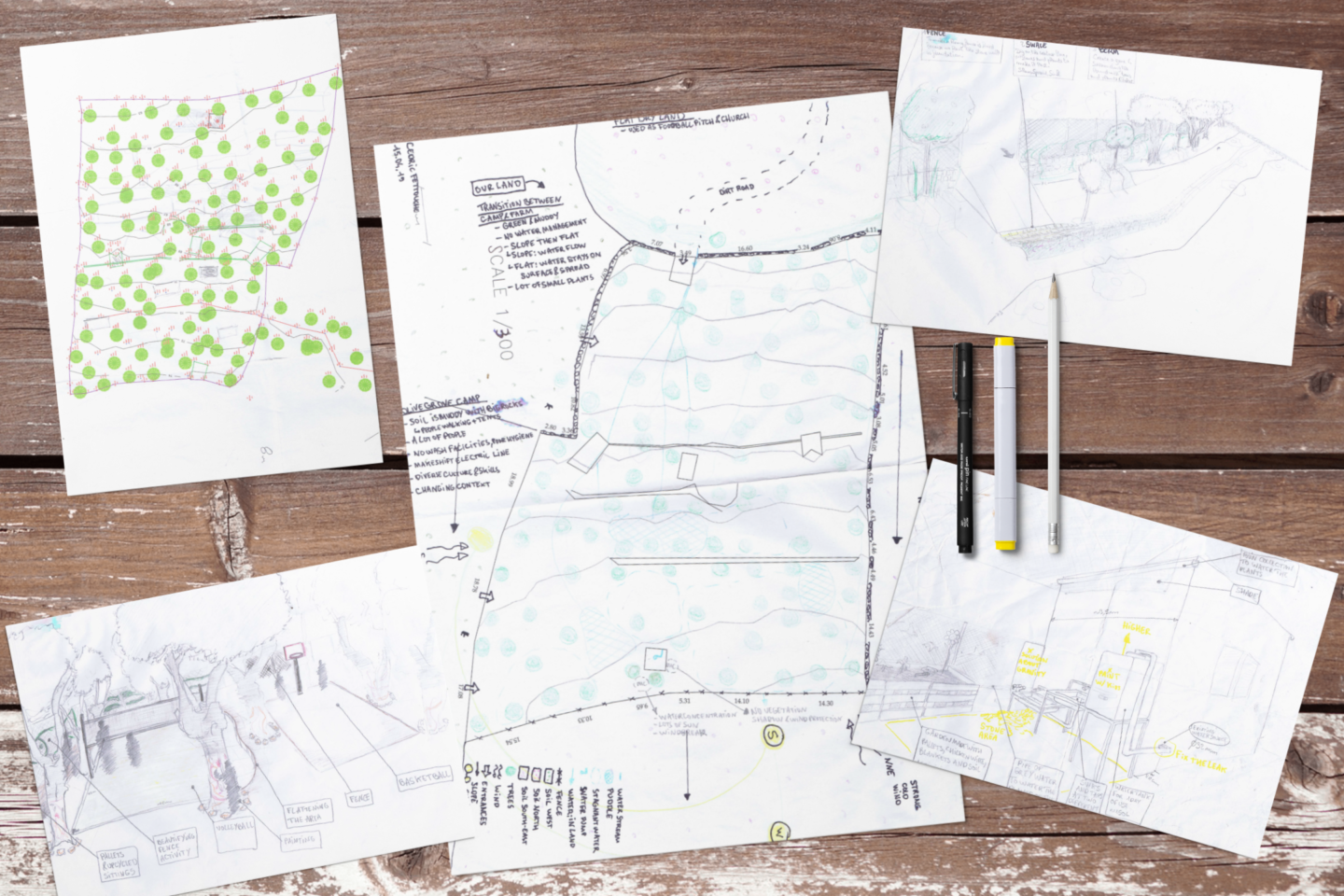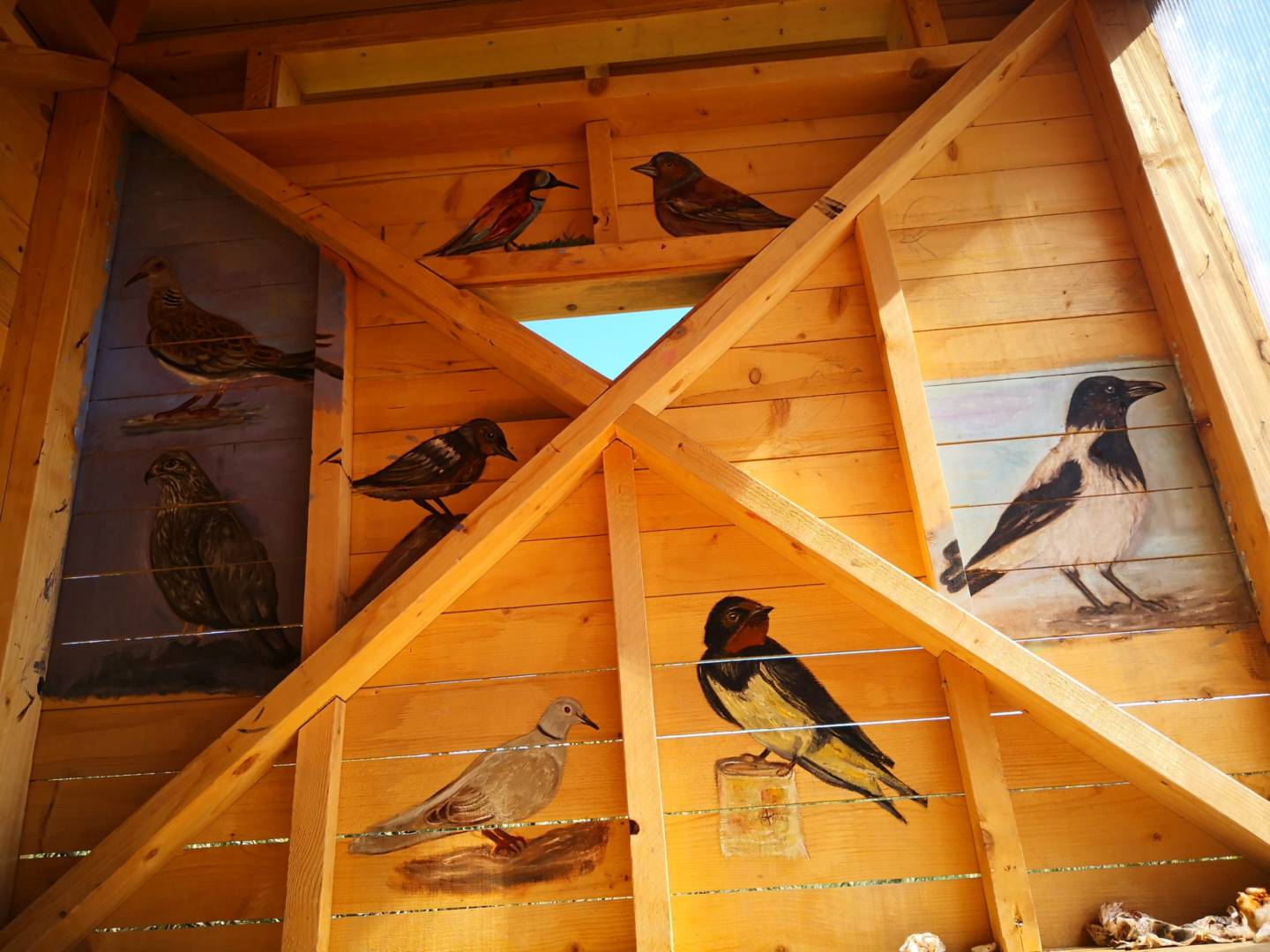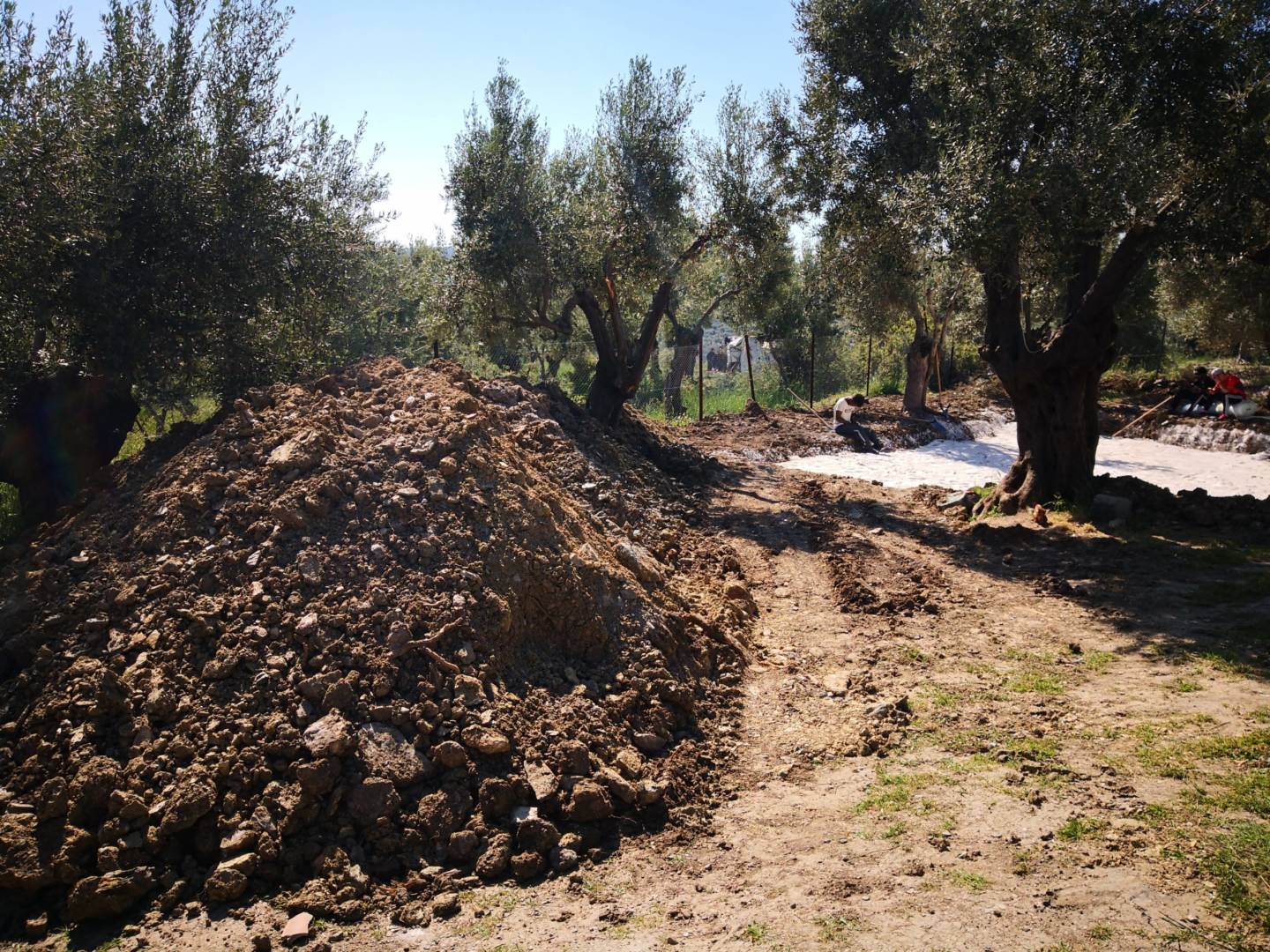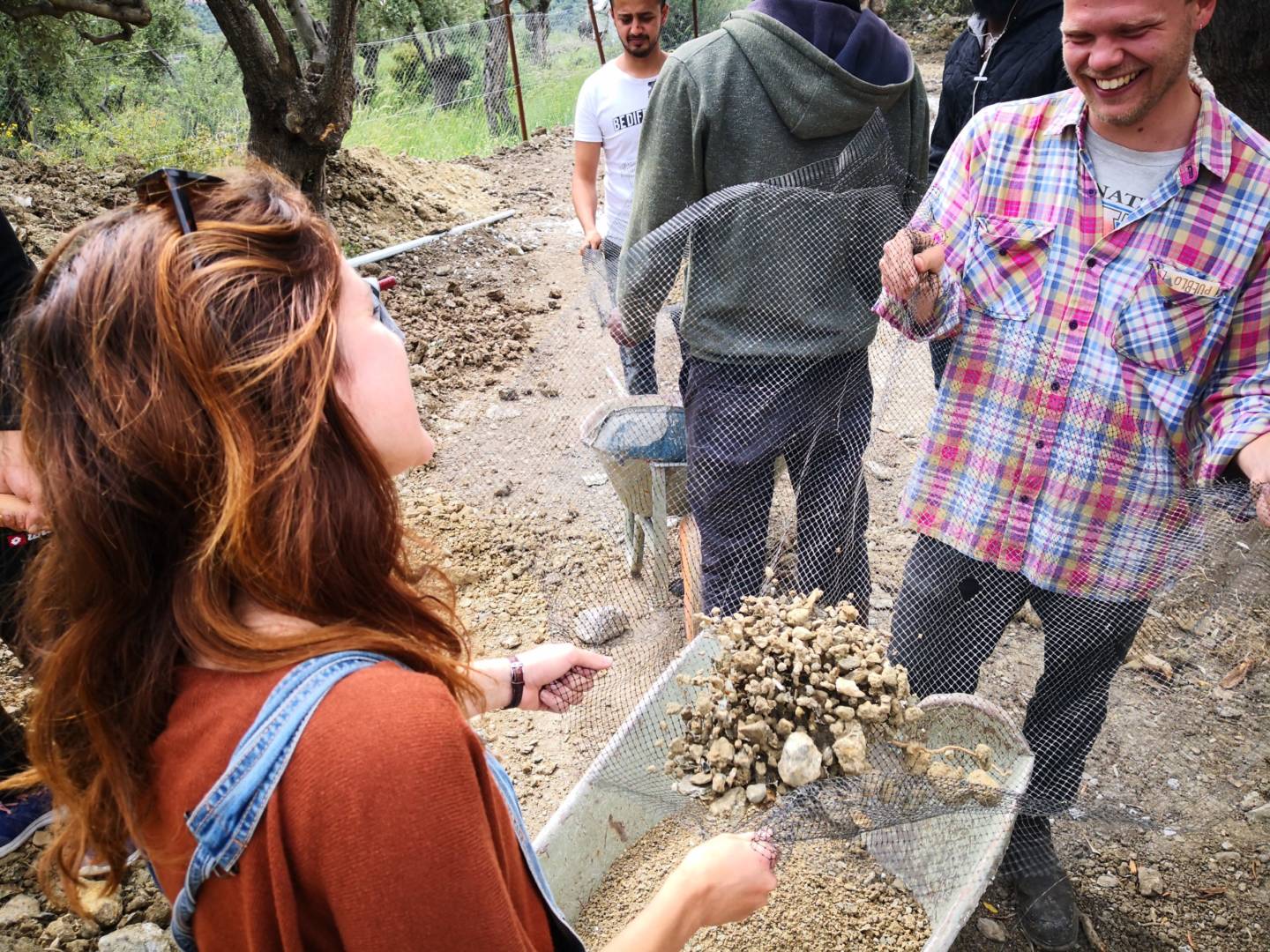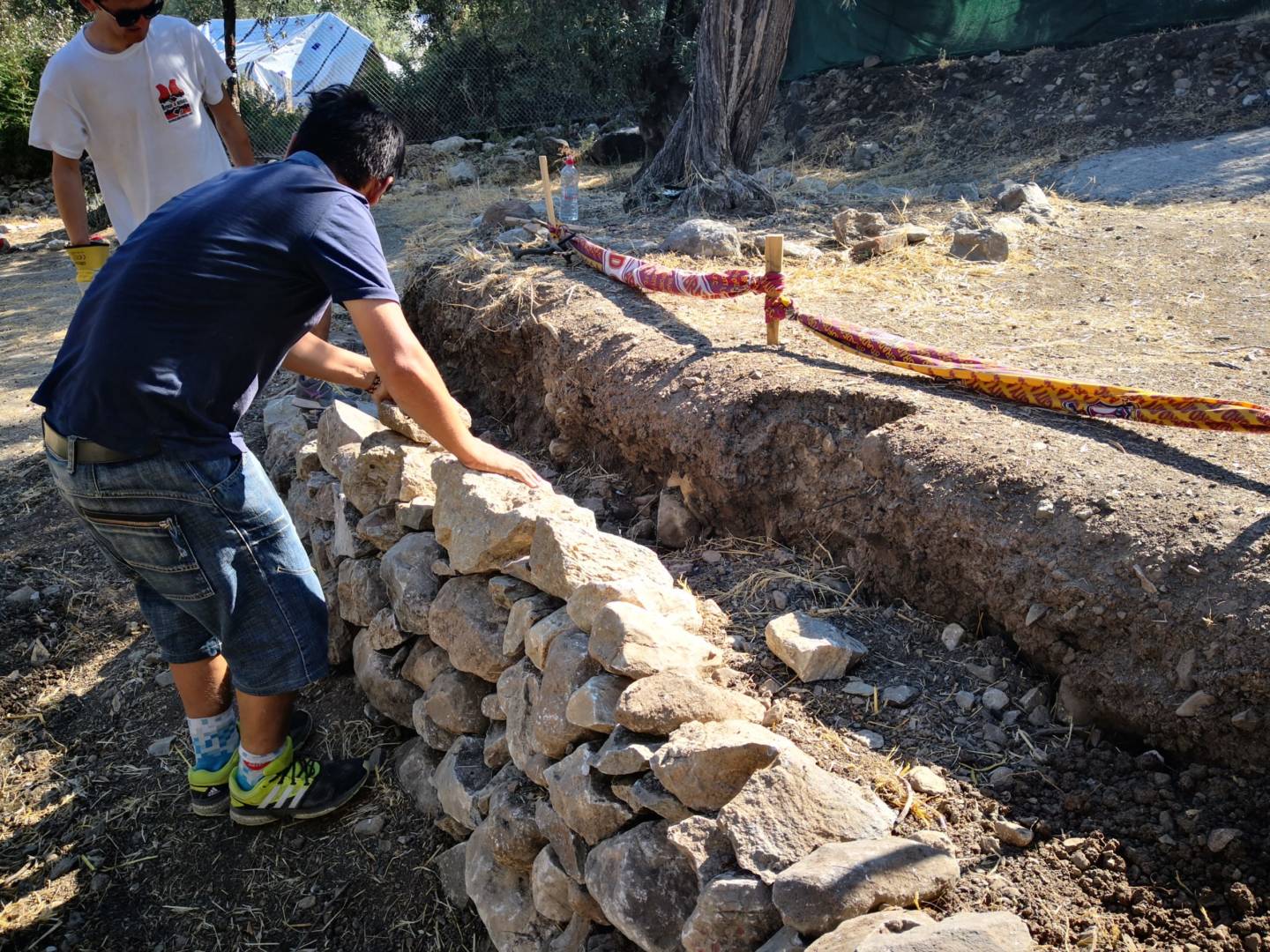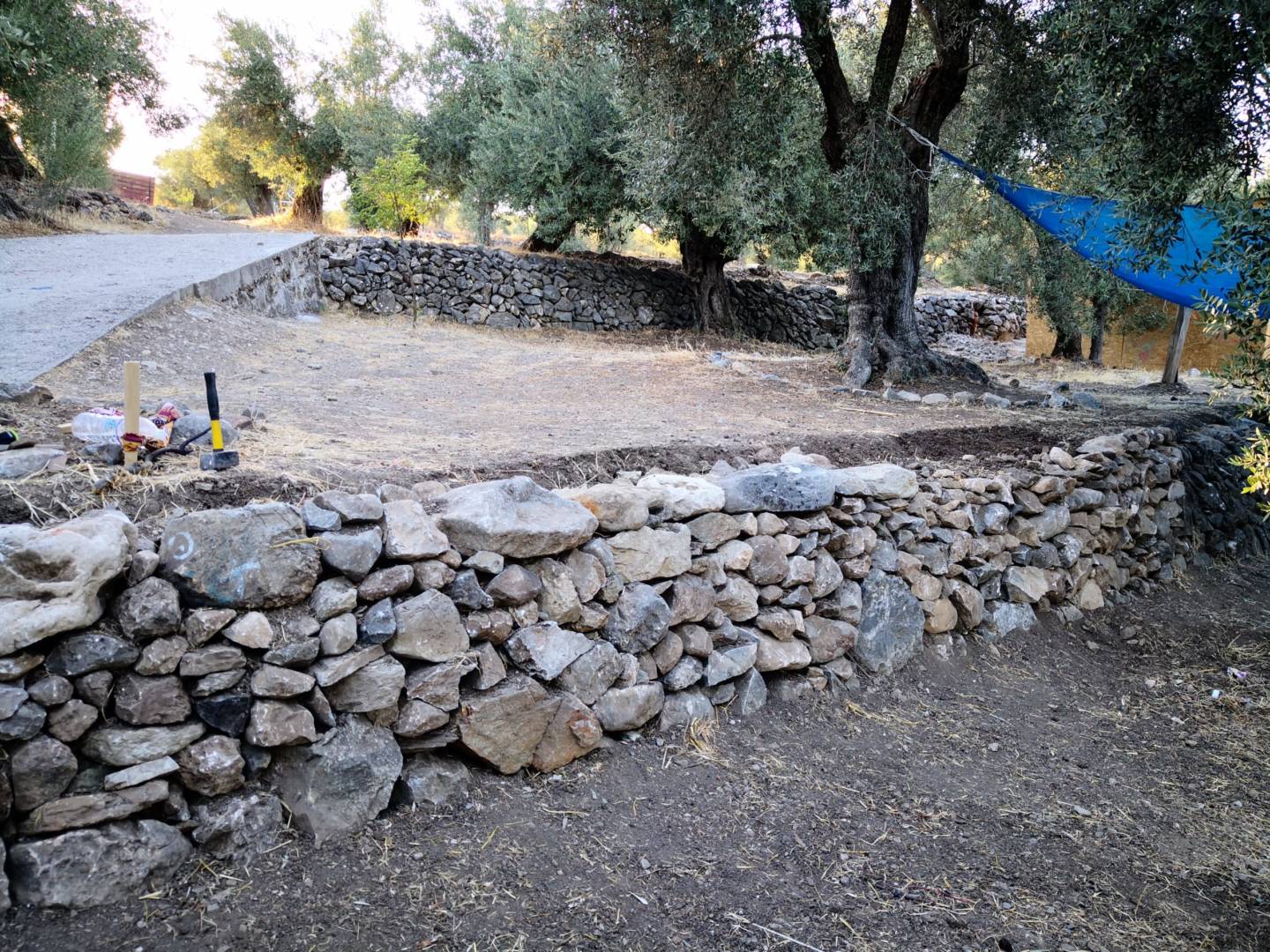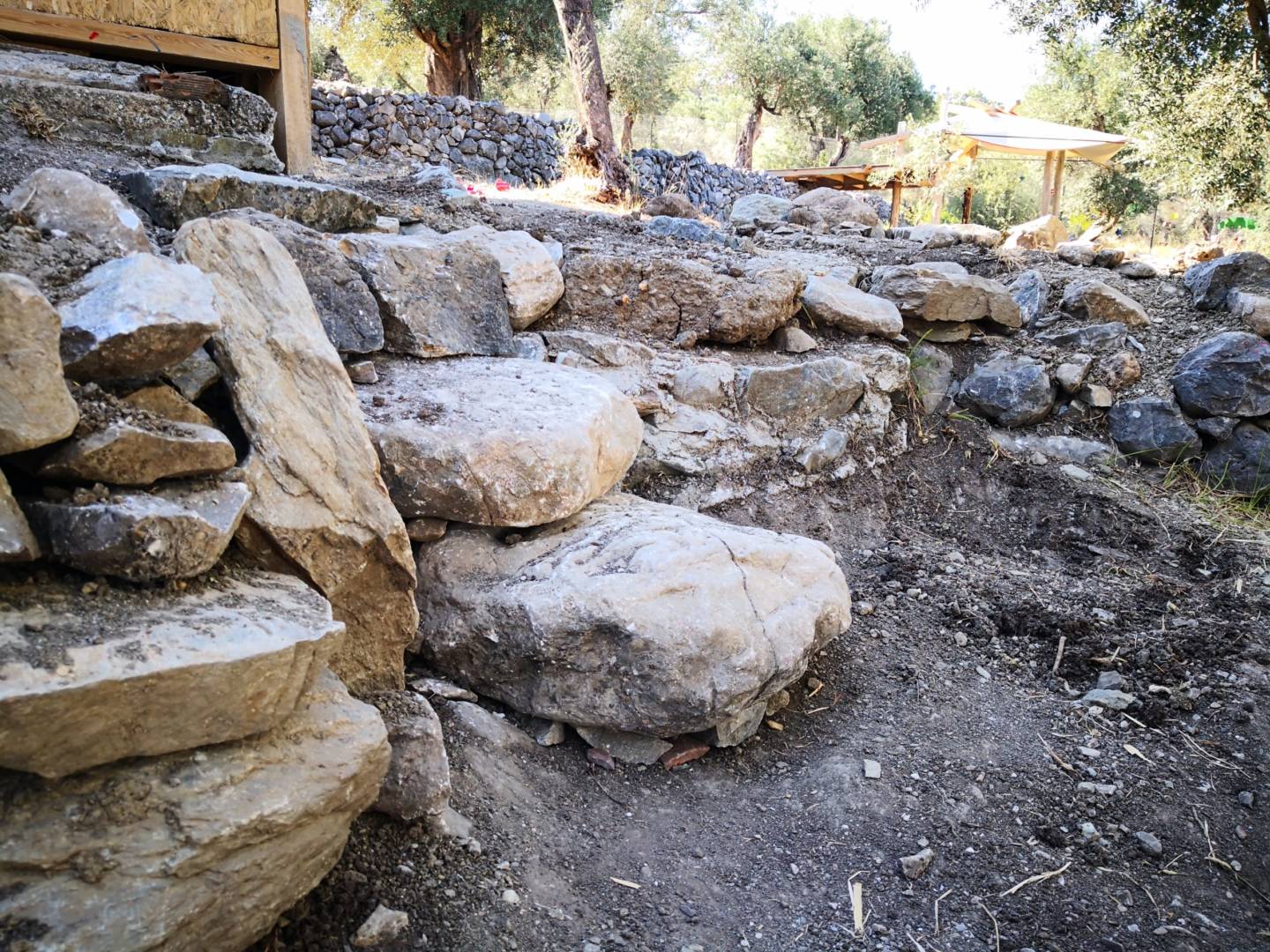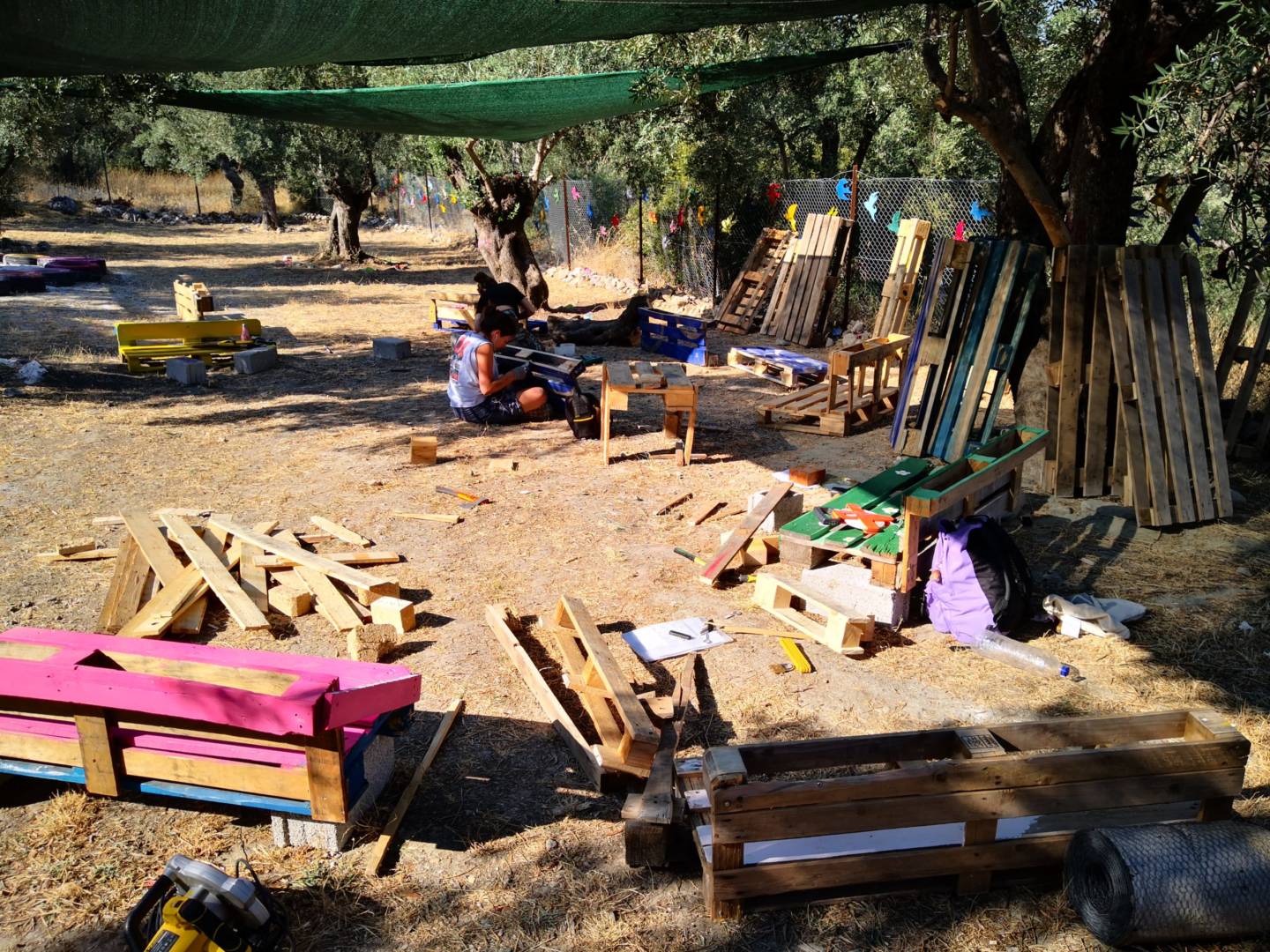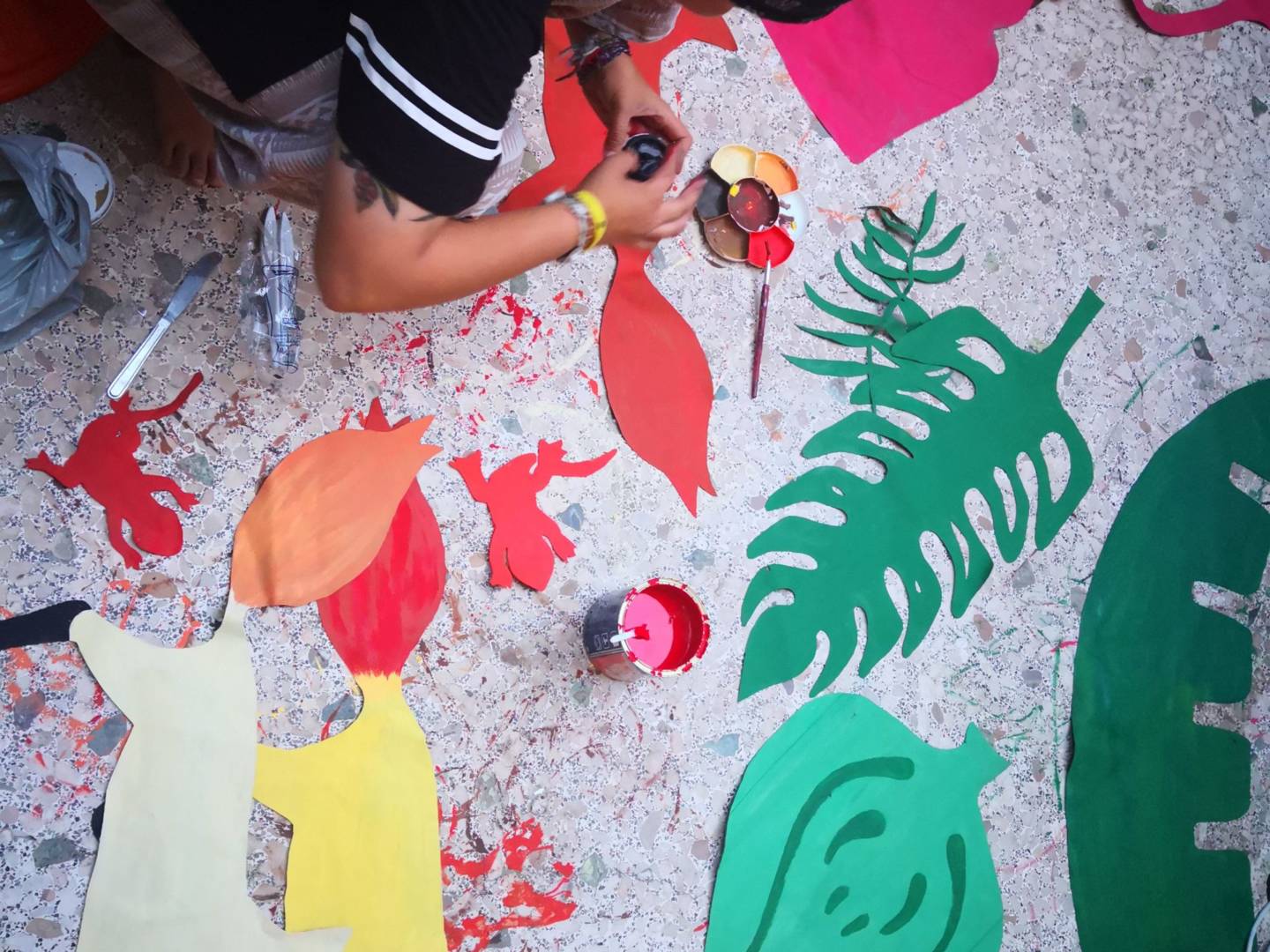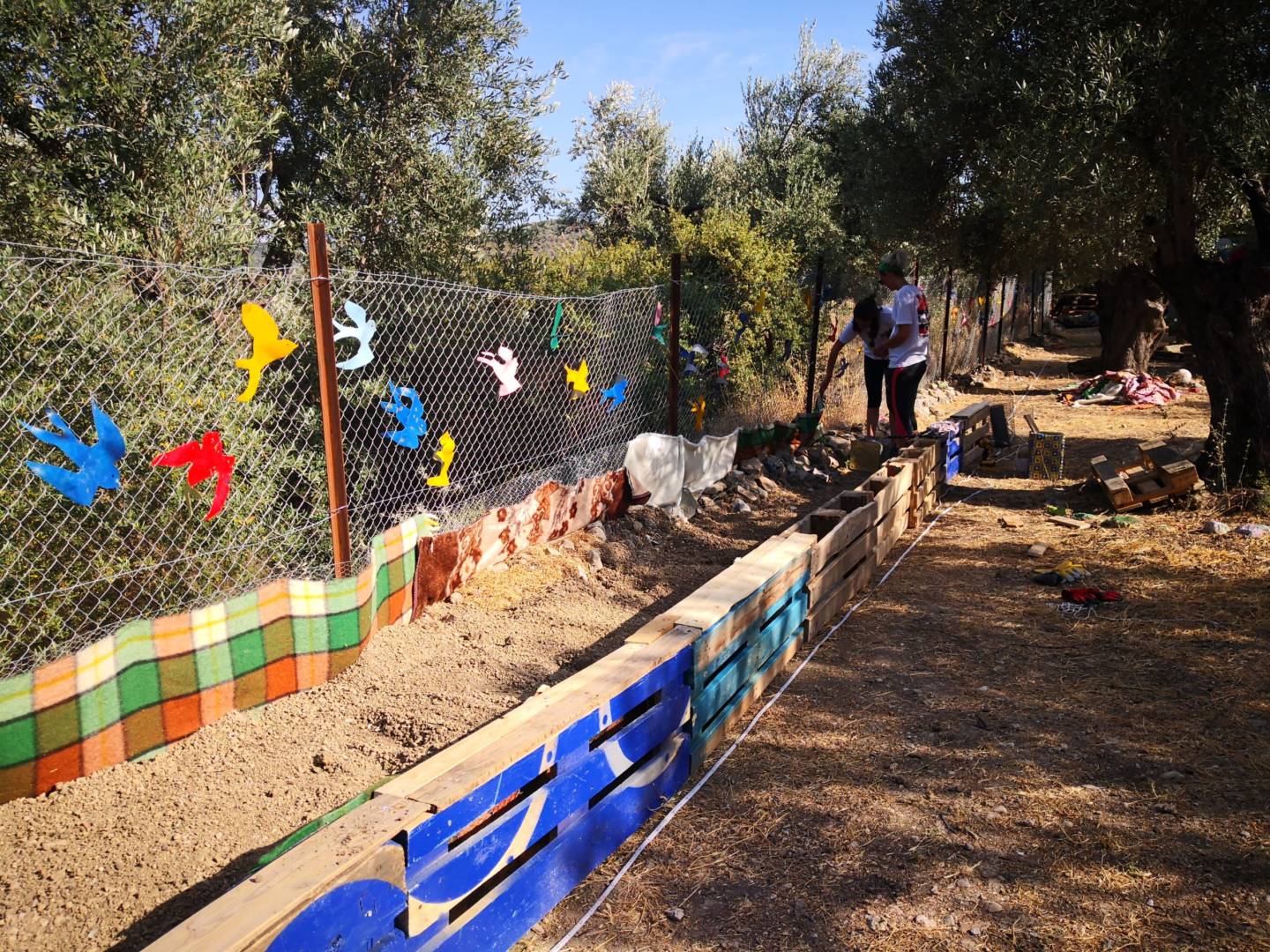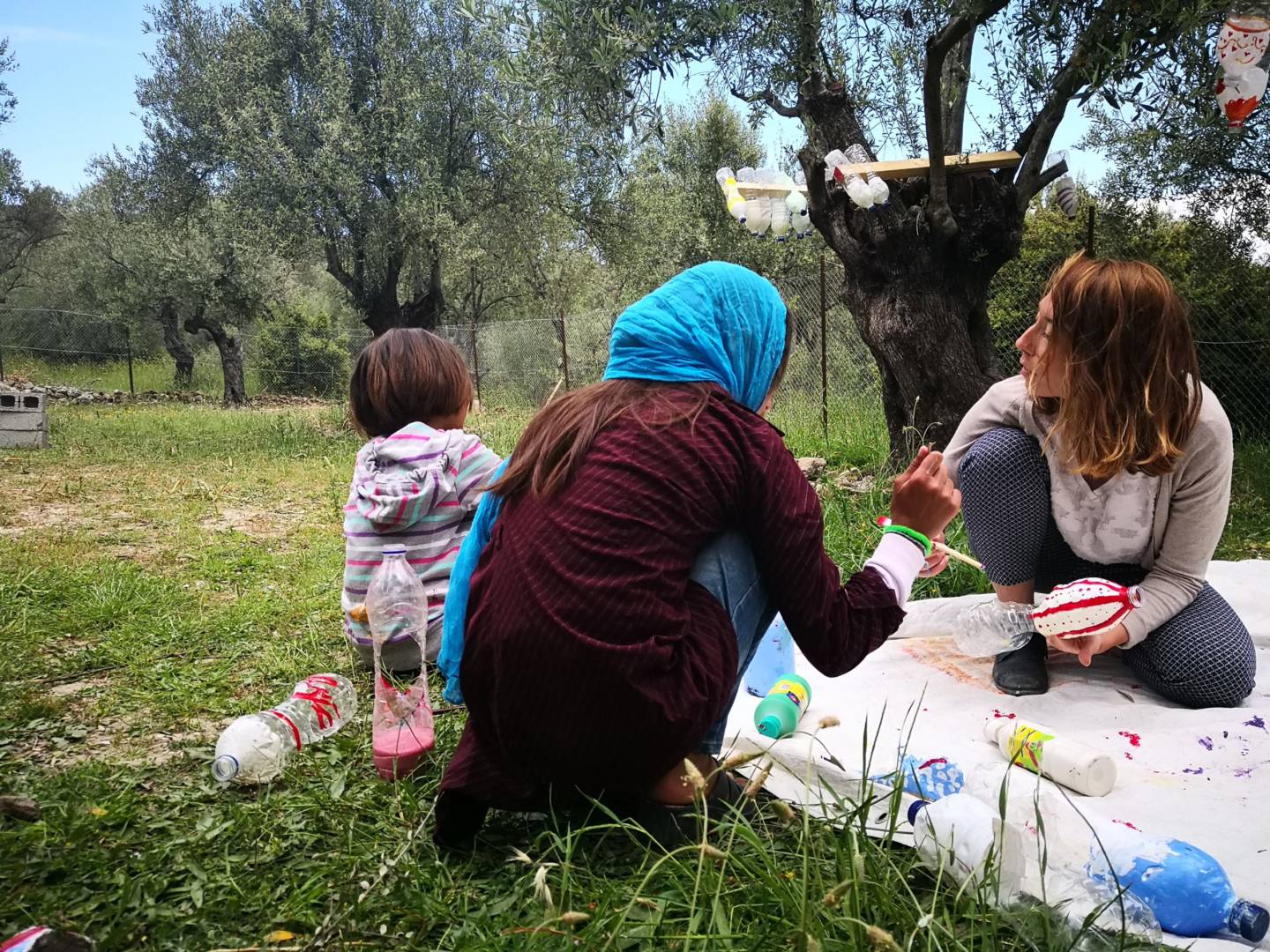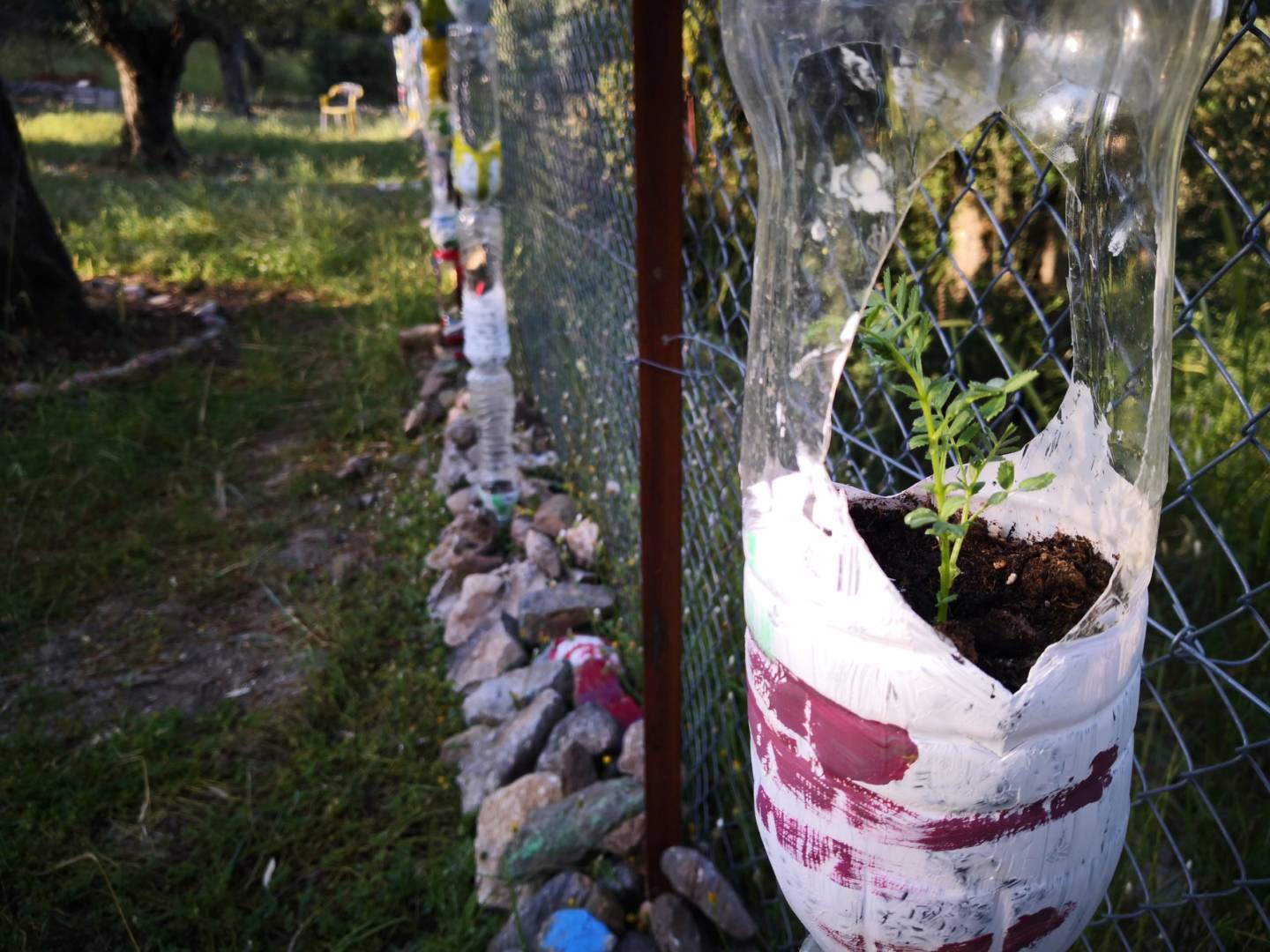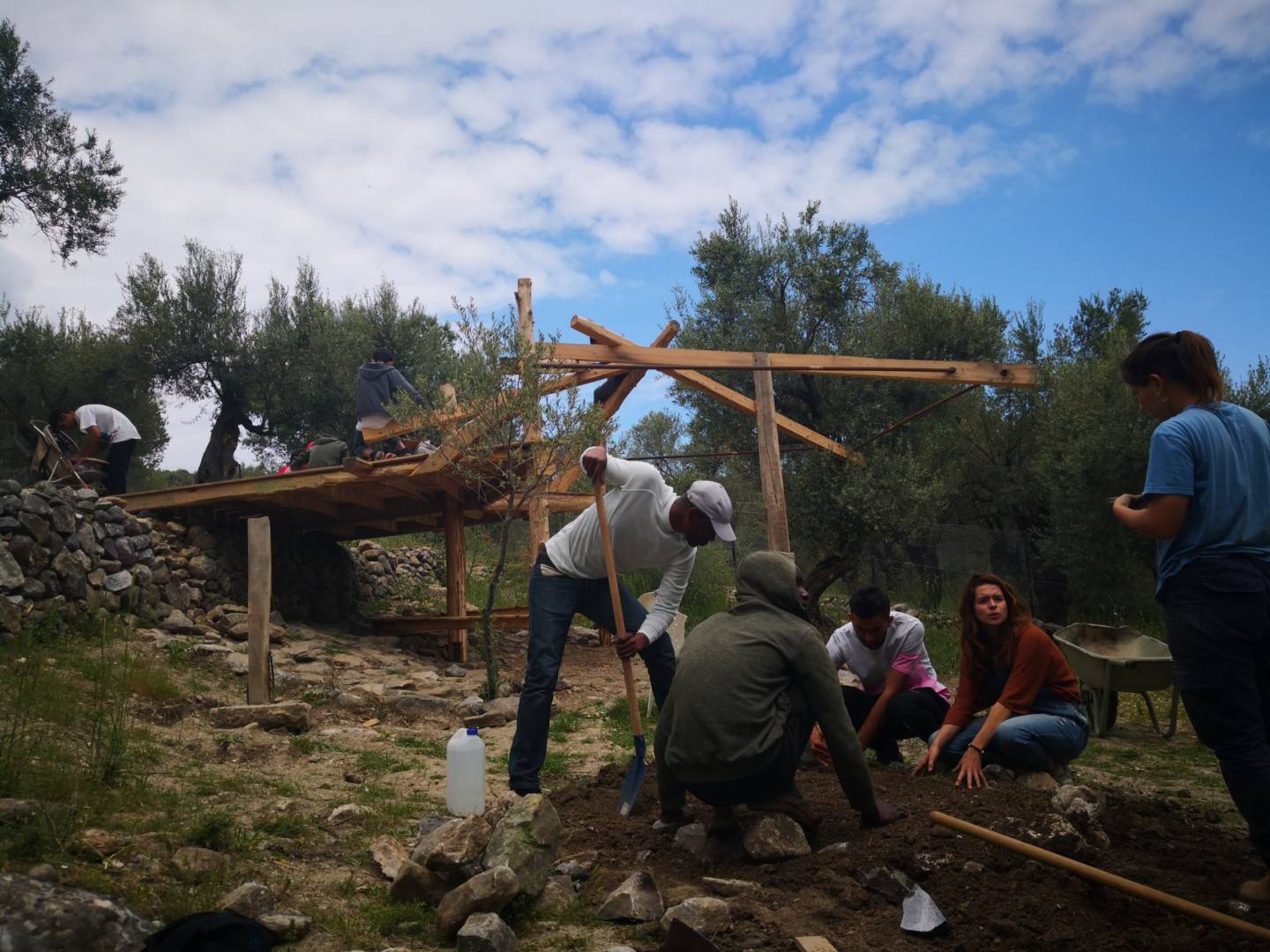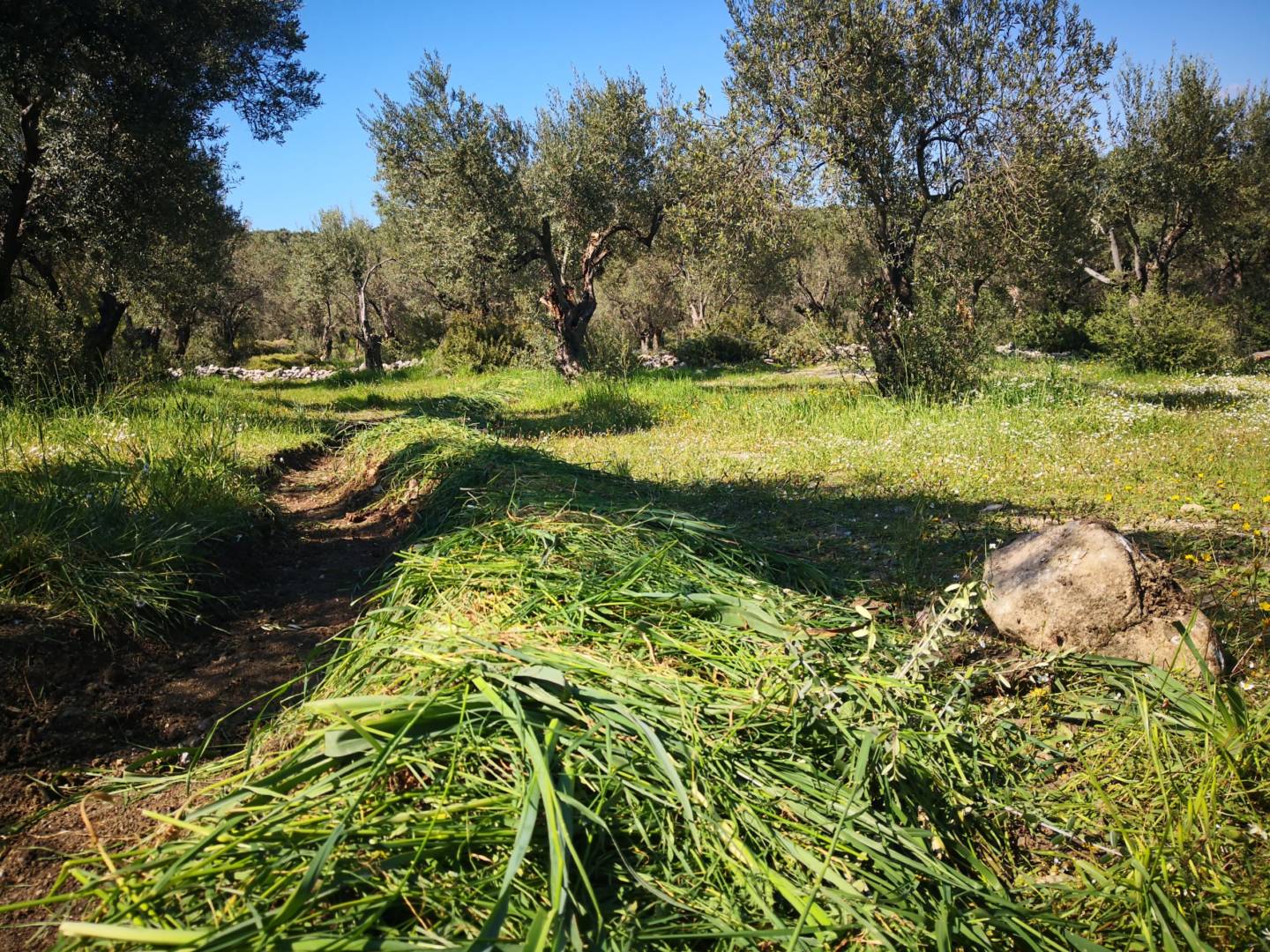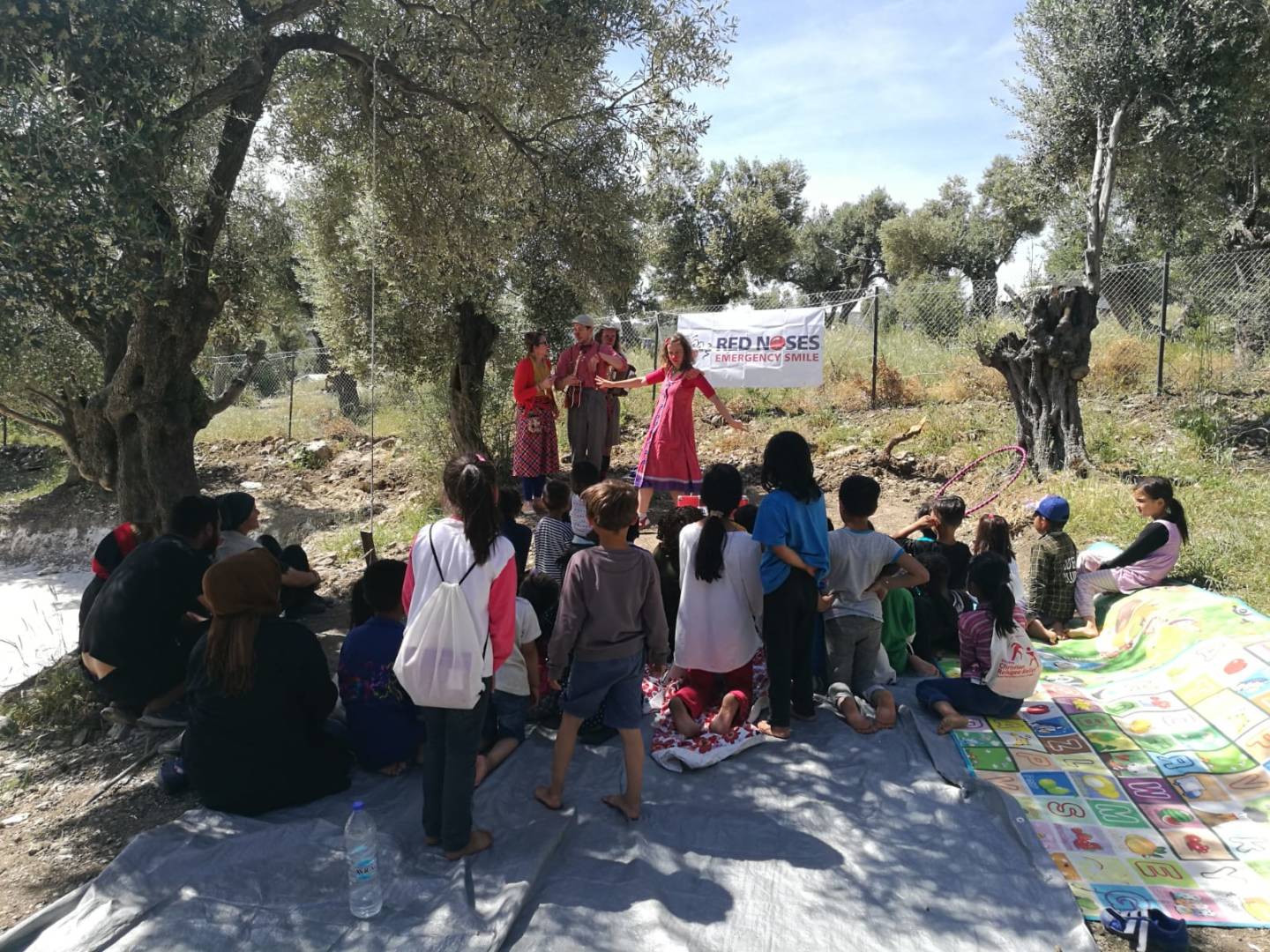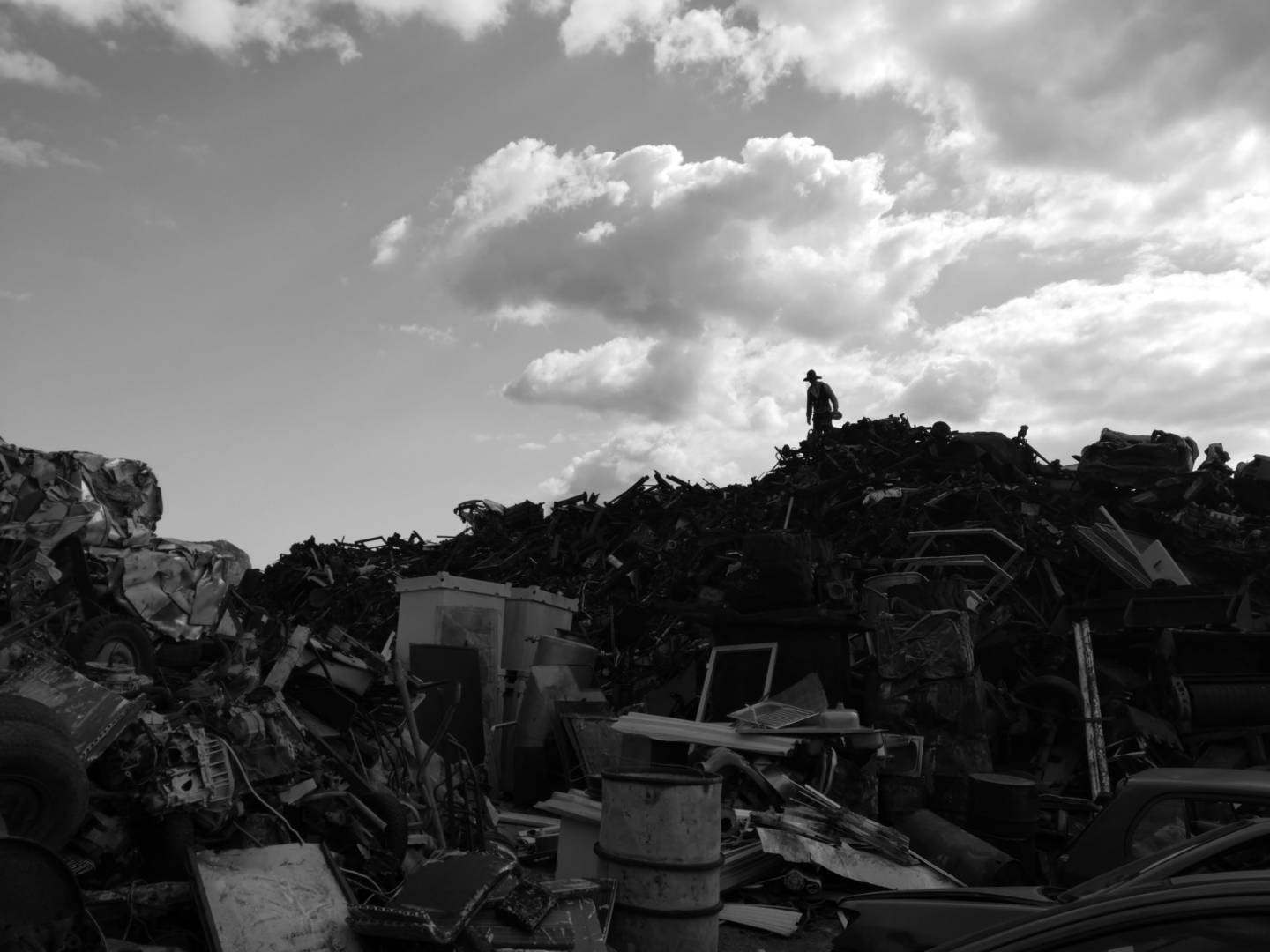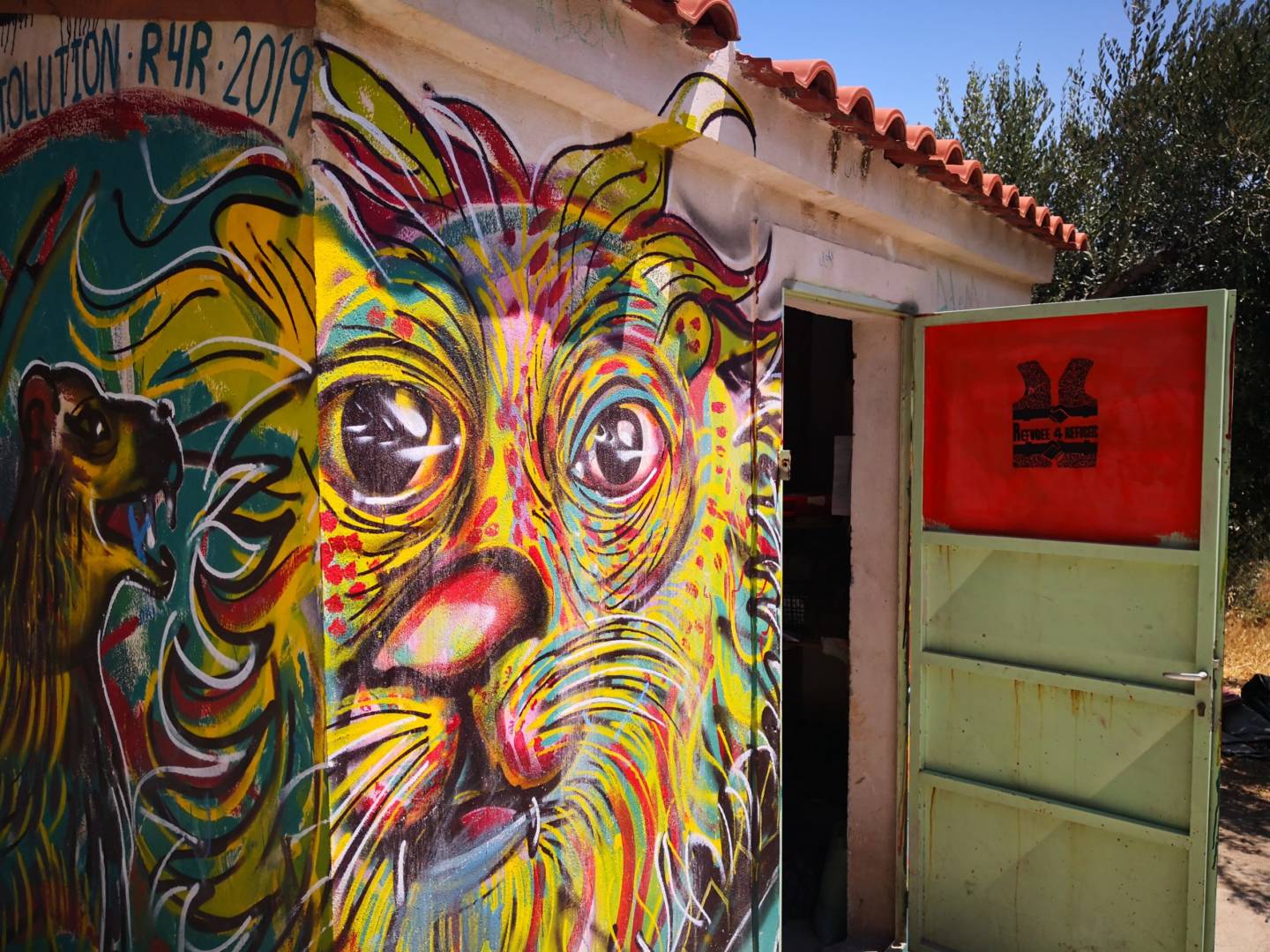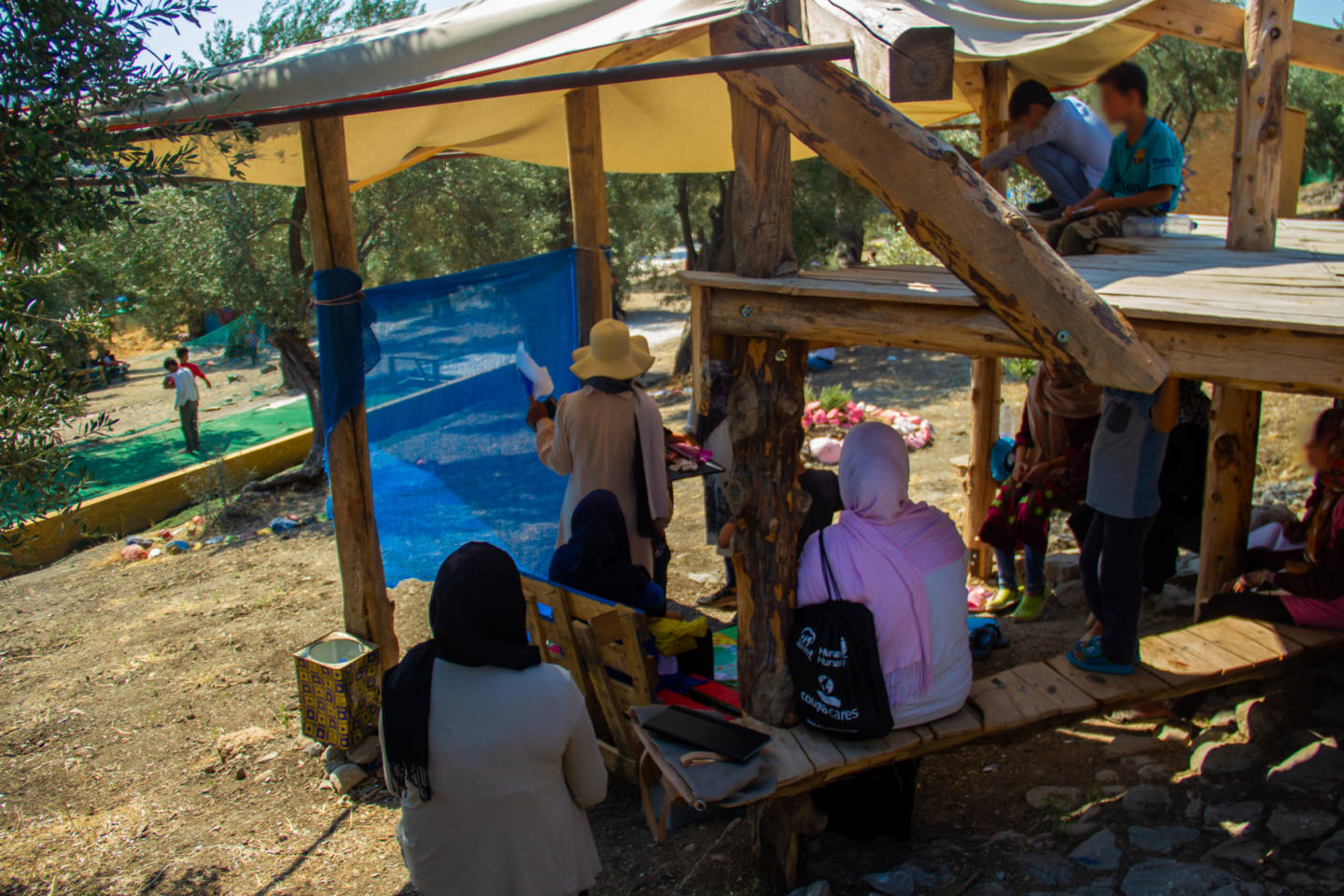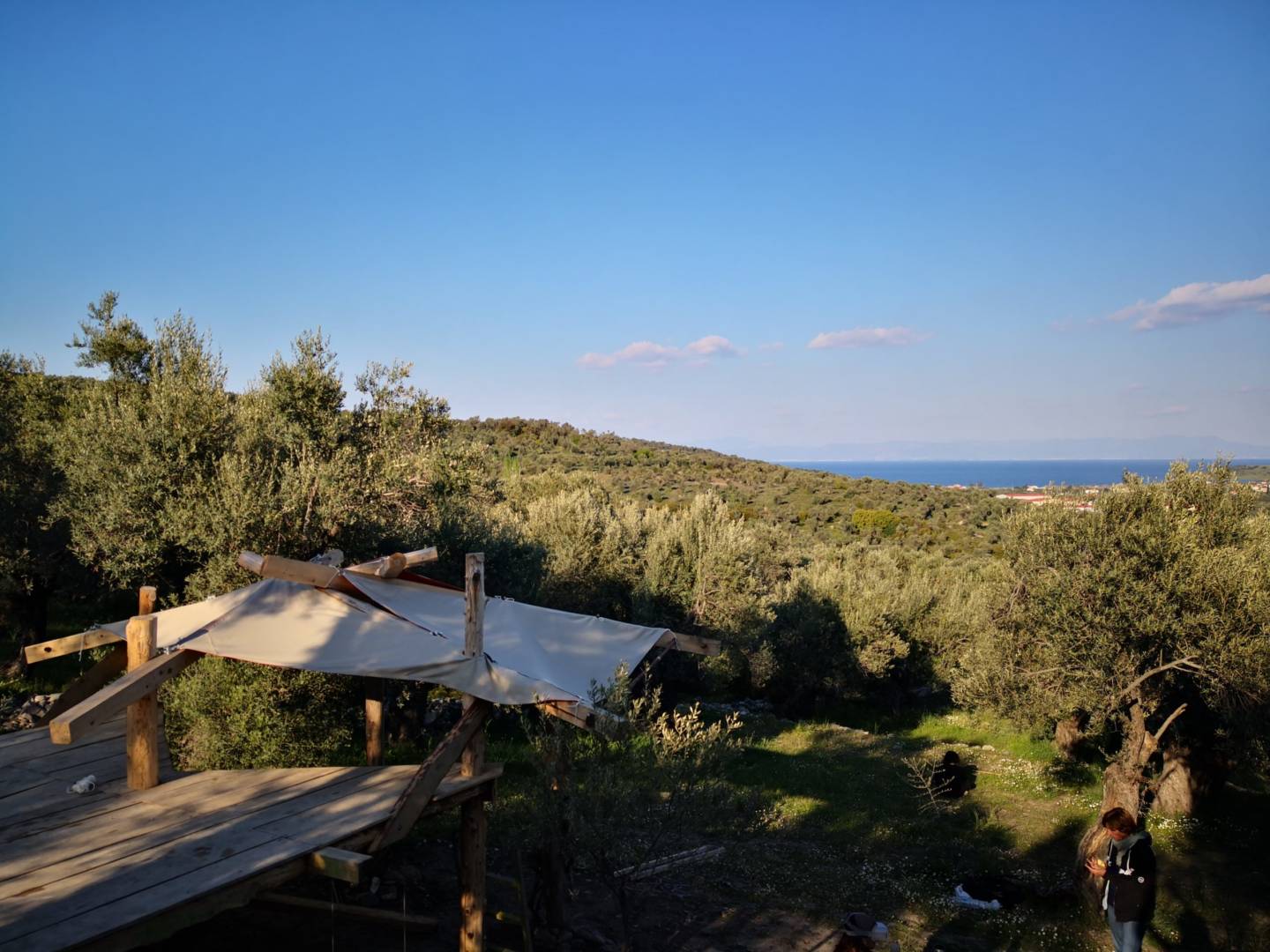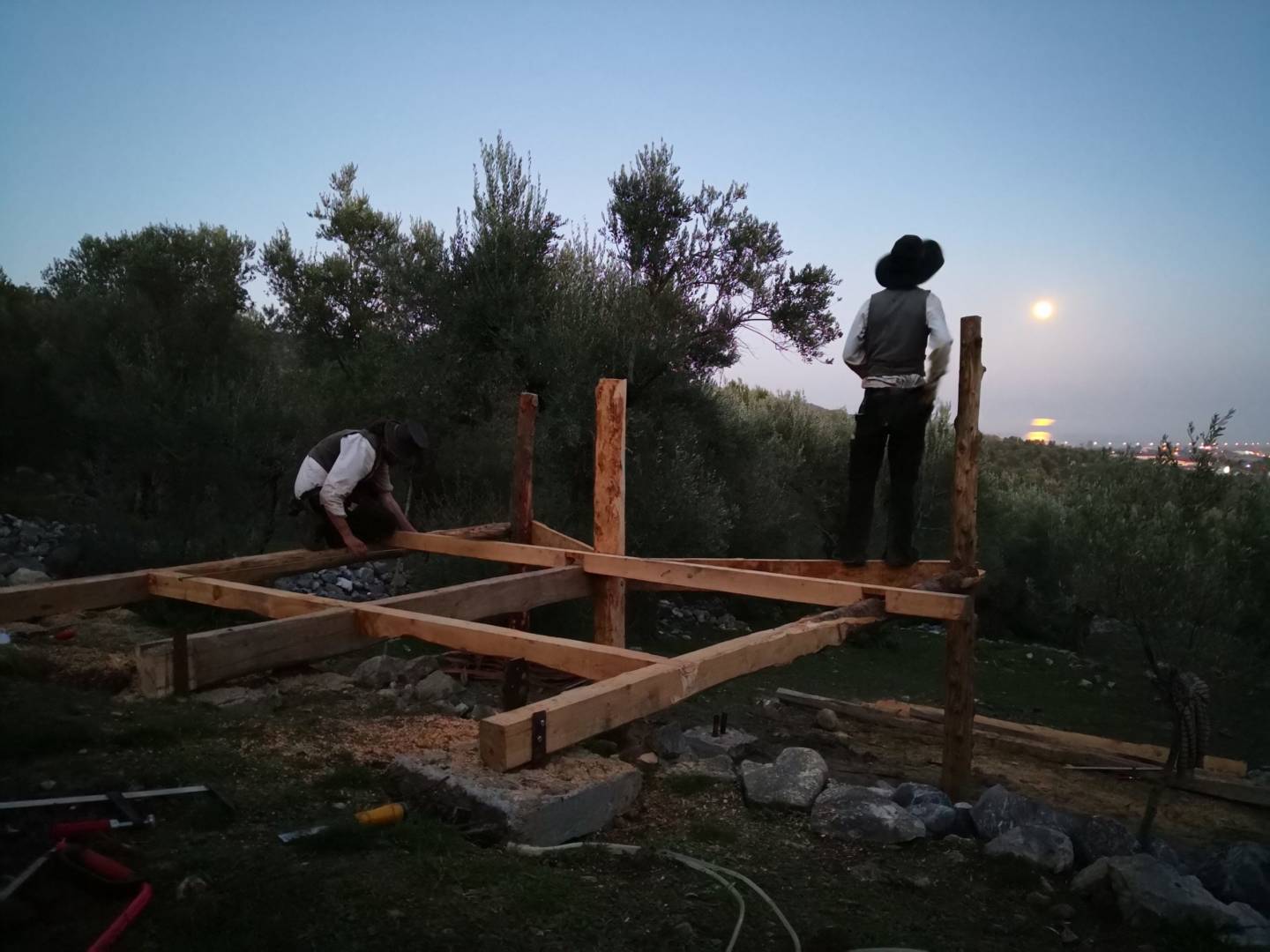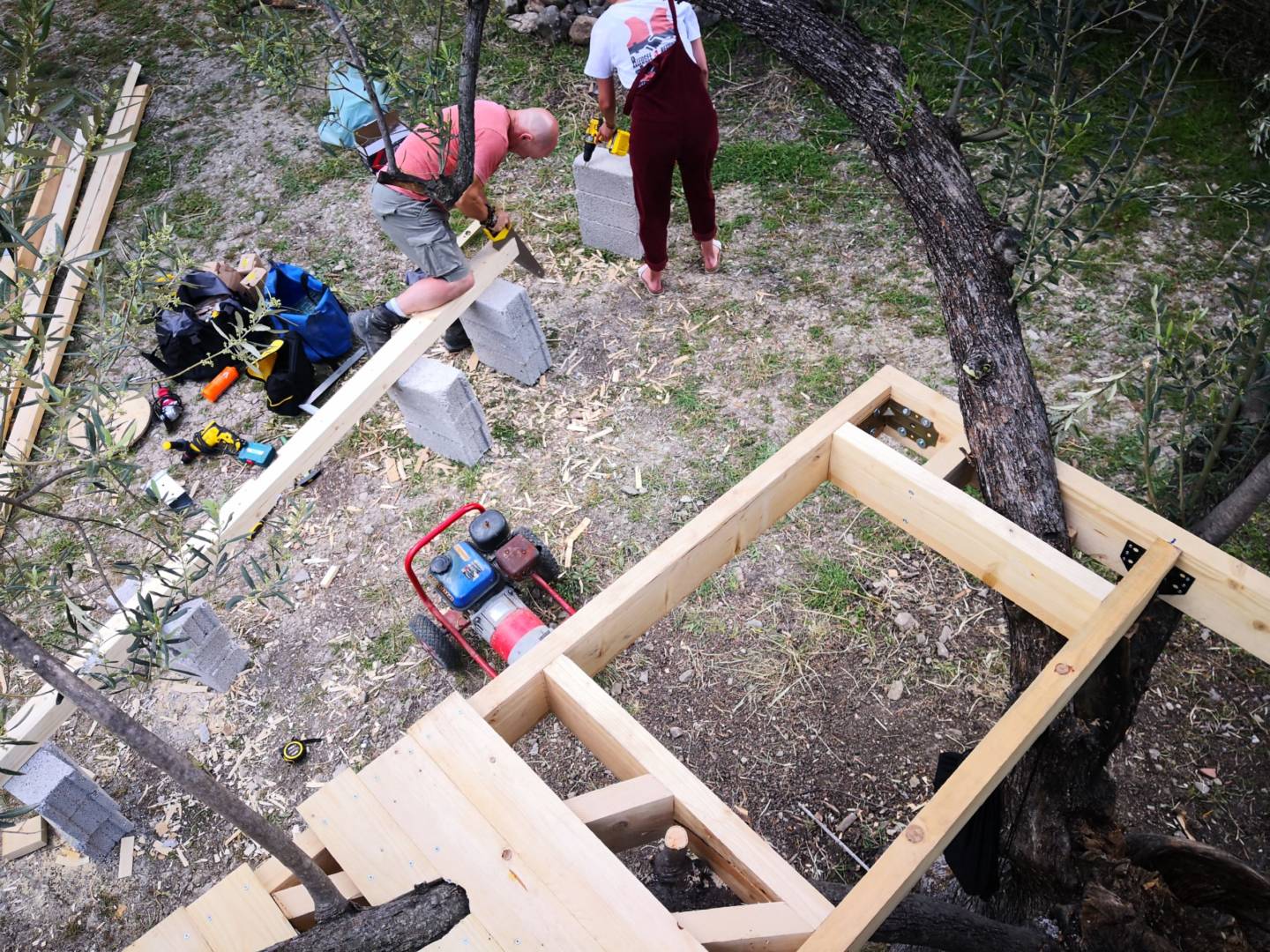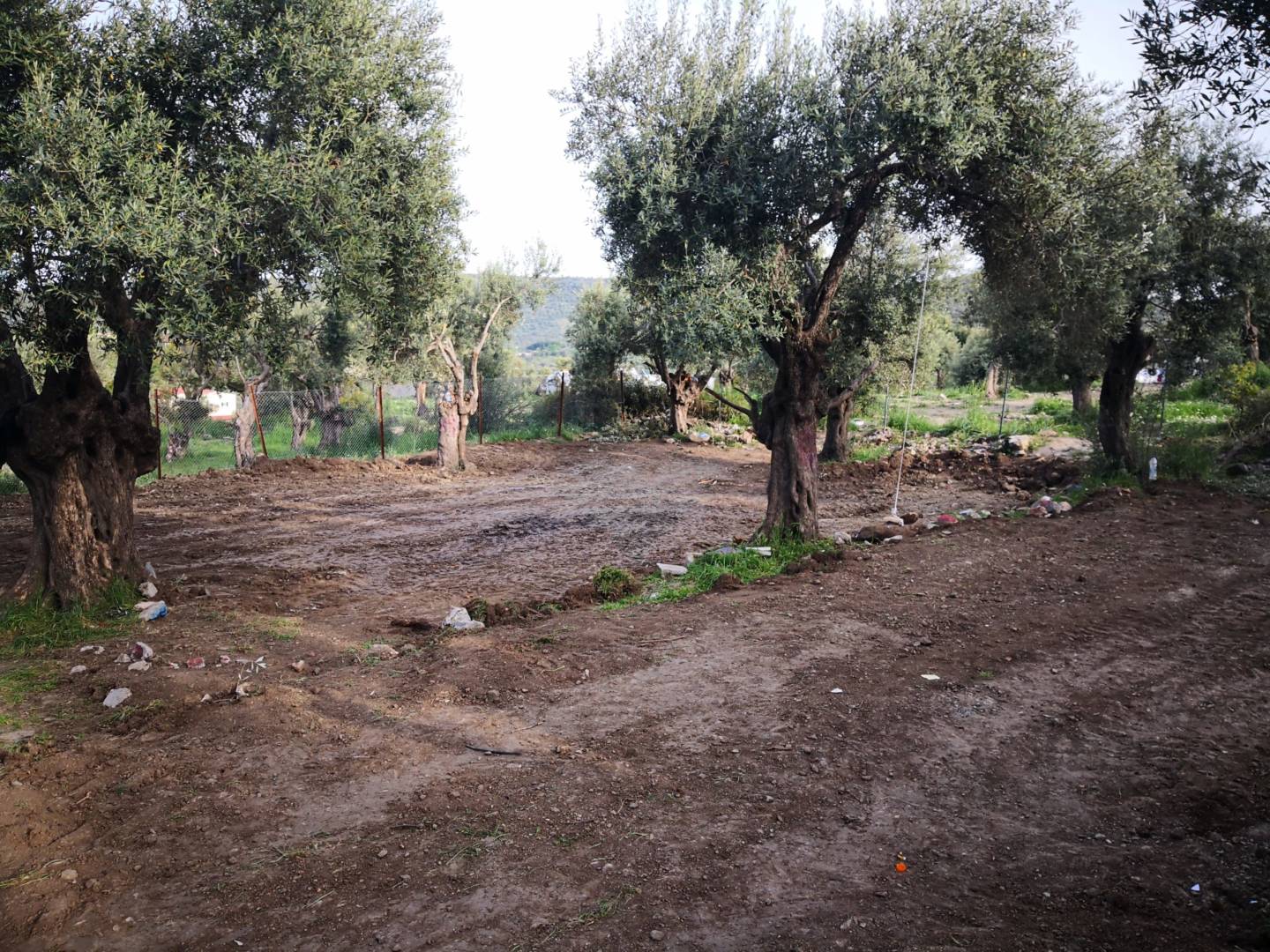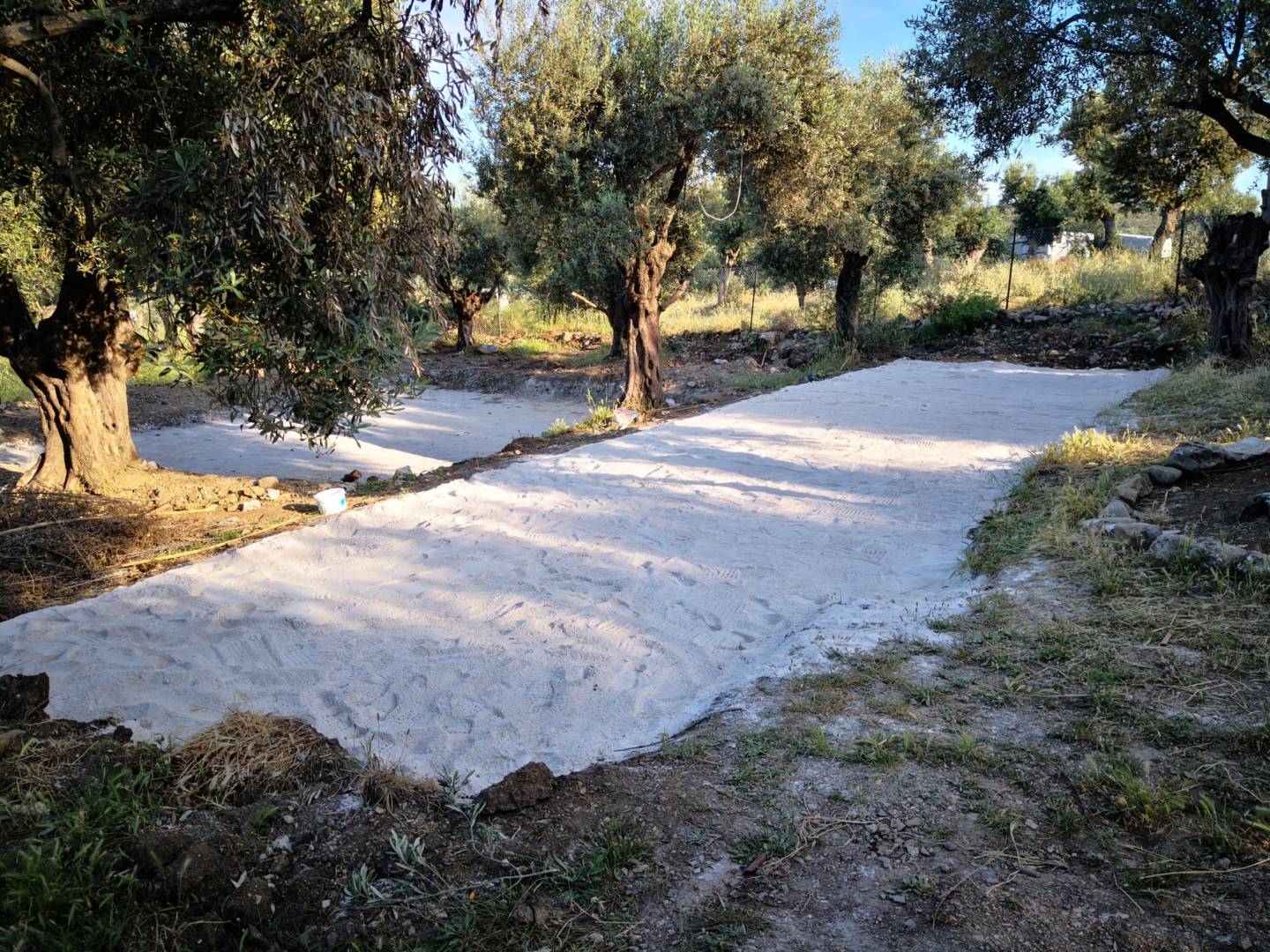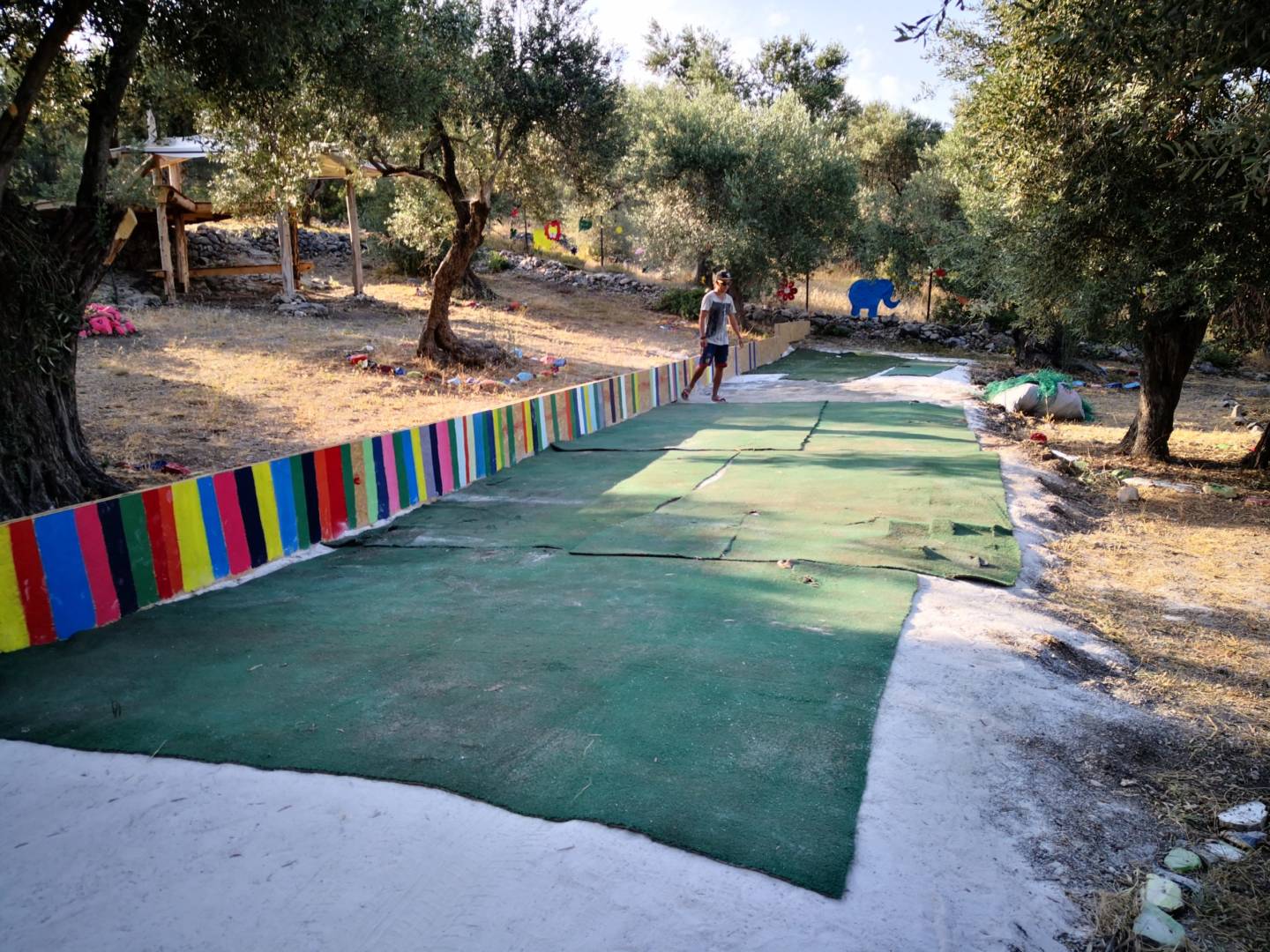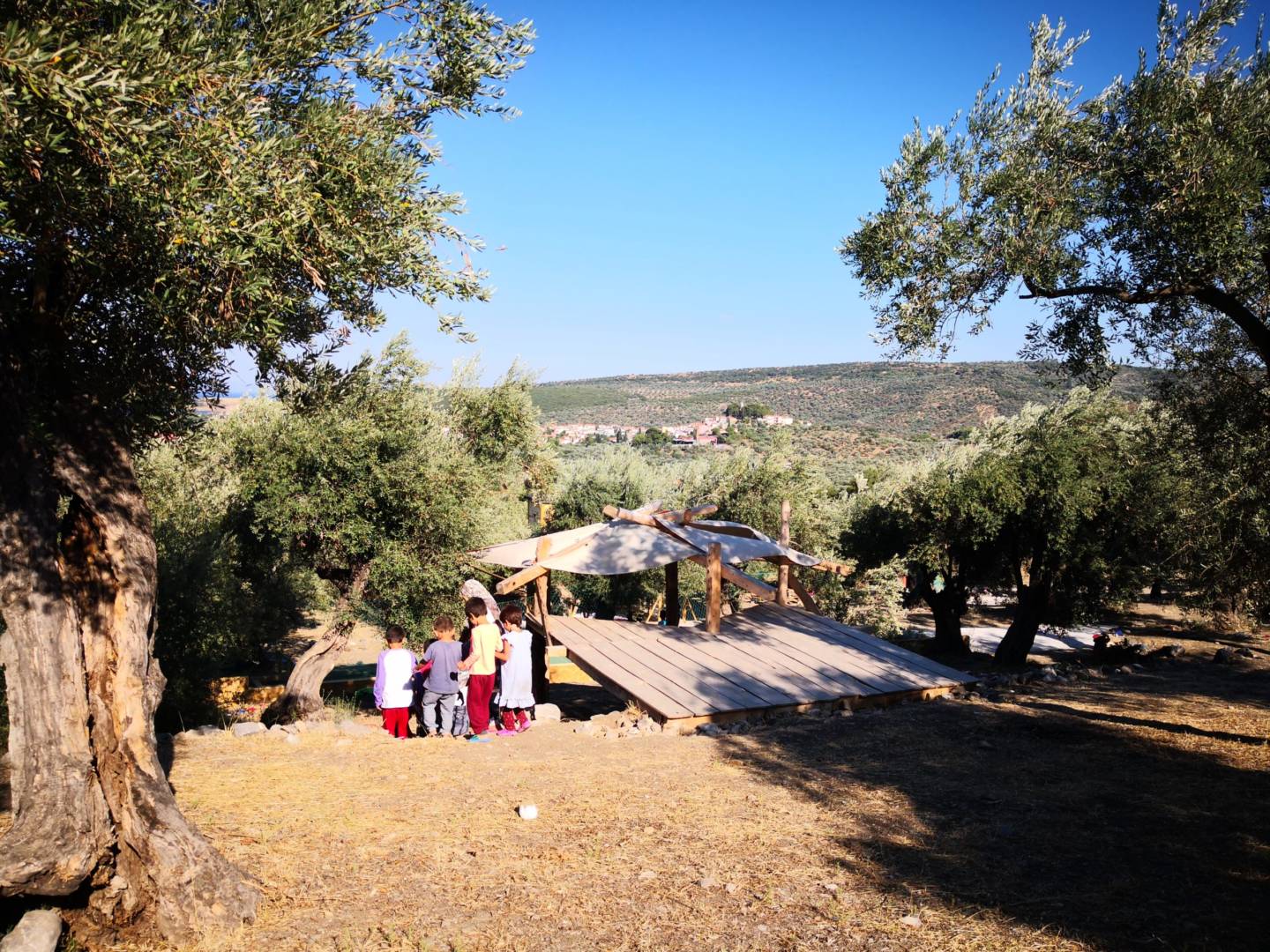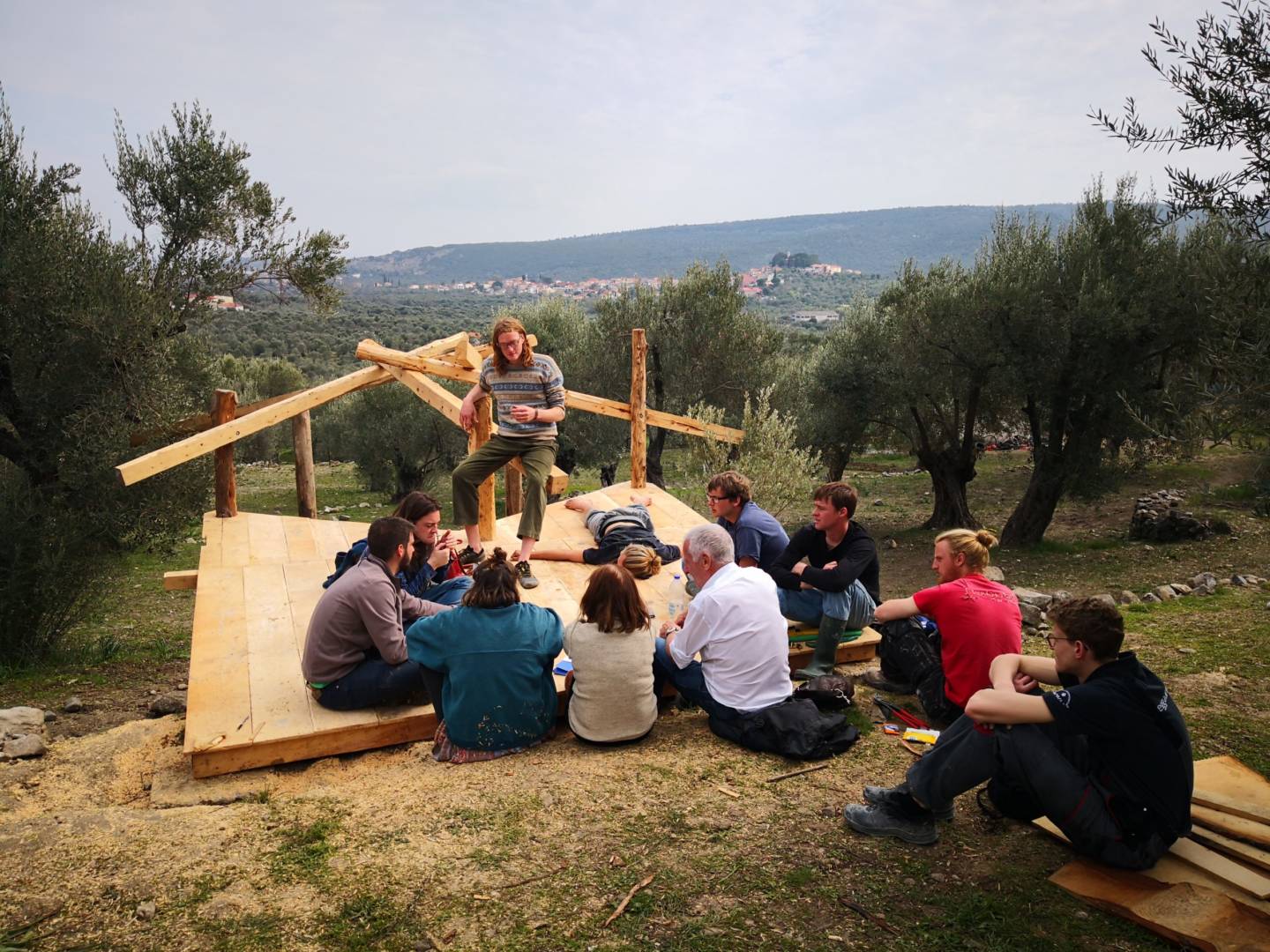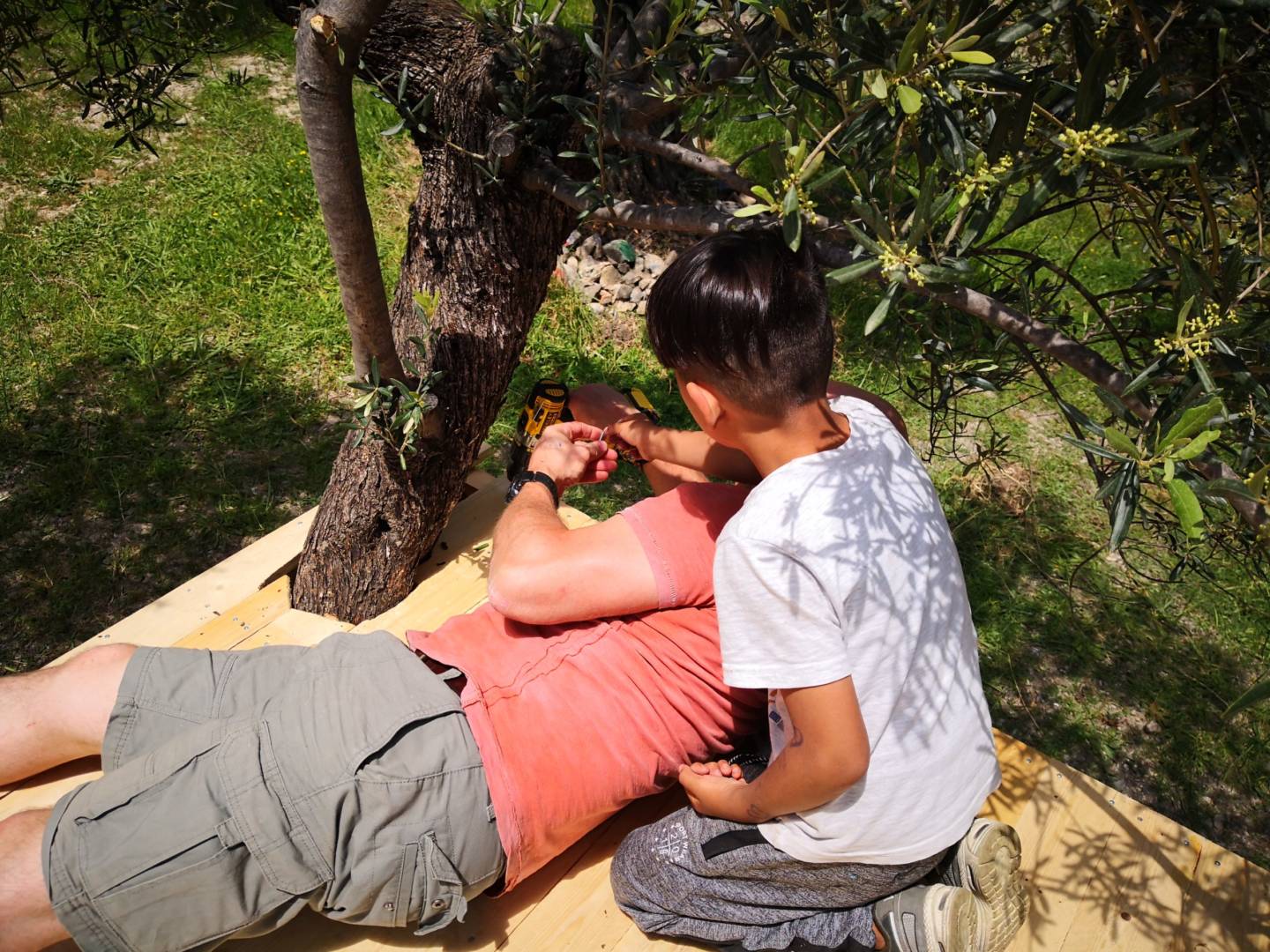Mandala Child friendly Space
Description: To create a peaceful and joyful child-friendly space next to Moria camp, where kids can learn trough play and appreciate the nature.
Organization: Refugee4Refugees
Job title: Project Manager & Volunteer Coordinator
Location: Lesvos island, Greece
Year: Oct 2018 – Aug 2019
SDGs: Goals 3, 4, 5, 10, 11, 12, 15
Context
The context of Lesvos, Greece, has been fragile since a few years. In March 2016, the EU-Turkey deal has been turning the North Aegean islands into “hotspots”. From one day to another, people arriving by boat from Turkey were trapped into camps. Moria camp is world-renown for its insalubrious, unhealthy and unsecure conditions. The worst part? The uncertainty about people’s future. Forced to wait for years their asylum claim before to be allowed to continue their journey to the mainland. This pushes people into depressions and kids as young as 9 years old to attempt suicide.
What problem did I solve?
We agreed with the founder of R4R in October 2018 to start a Child Friendly Space few meters away from Moria camp. The idea was simple:
“kids are playing on the road crowded with cars; with the open water drainage; with the bins and trashes. They are all day long by themselves on the Olive Grove because their parents are busy doing the food line for hours or having appointments with lawyers and doctors. We can provide a safe space.”
There were 7000ppl at the time with an average of 35% of kids. We knew no NGO could fill the gap. That’s why our goal wasn’t to run educational activities but rather provide a safe place for as many kids as possible. We believe that learning through play activities can be as empowering.
I was project manager in charge of developing the vision and the structure of this 4000m2 olive grove. My colleague Ana, psychologist by profession, was in charge of developing and running the activities. She was doing the morning shift and I was doing the afternoon shift so Mandala was open all day long with a break for lunch. We got supported by many people that I couldn’t name them all here.
How did I solve it?
My goal was to define a clear vision & strategy based on collaboration with communities and environmentally-focused solutions. A place open to everyone and safe for children.
Analysis
With all my experience, I came to this project with a few insights:
- If I want to run a proper analysis, I will have to fight for it. Because the humanitarians out here do not take time to sit, brainstorm and make a plan. They just do, with an emergency mindset. So, I knew I would have to explain my methods and convince people to take the time to assess the land, the context and the activities.
- To keep the true nature of our grassroots NGO by bringing creative & dignified solutions. But to introduce strict Do no harm guidelines to become more professional. Especially for a project involving children.
- To stay alert to the context of the island and grow organically with the resources and people available. I have seen many projects failing by being too close from the camp, mostly because of security issues.
- To keep the land as much natural as possible and avoid an “all-artificial playground”. It was a personal motivation to avoid concrete as much as possible by respect to the land and the locals. We also had no electricity, no sewage disposal and no direct road access for trucks.
- To give freedom to kids and let them decide what they want. Promoting values such as “learning through play” that I learnt in Freinet primary school.
- To create a storytelling about the natural aspect of the area. Promote environmental ideas and eco-activities.
- To do partnerships and become more resilient.
- To collaborate, give ownership and find skilful people to develop the place and create a community.
Environment
We found different ways to implement environmental consciousness:
- Creating a storytelling around nature: for example our tree house became a bird watching tower (internationally renown activity on the region). We found a local ornithologist to share with us a few local bird’s names and we asked an artist from the camp to paint the birds inside the tower.
- “Any waste is a resource”: when we flattened the floor for the sport field, we had a huge remaining pile of soil. We filtered it, used the stones to repair our traditional stone walls (new workshop), and used the soil for our garden. By practising this motto we saved 10% of our budget.
- Organising eco-activities: our partners were experts in low-tech solutions, gardening and permaculture. We ran activities for adults and for children. Like a permablitz to learn how to create a vertical herb garden. We tried to develop need-based activities that could be replicated on the camp.
Ownership
Giving ownership was an easy task with volunteers because we knew their skills from the initial screening process. We had carpenters, teachers, tree surgeon and many relevant skills.
But giving ownership to the people from the camp was less easier than expected. My experience with One Happy Family (a community centre ran by people from the camp) made me think it wouldn’t be so difficult, but it’s an other task when you have to start it from scratch. More than finding people, there is a real culture and structure to create within the NGO: WhatsApp groups, habits & schedules, remuneration, …
“To create a community in this context, you first need to truly care about the people. Remuneration with no empathy won’t go anywhere.”
Construction
It was a challenge to be in charge of the construction team. I had experience in planning but I always had a Greek colleague to help implement, especially in Greece. This time I was all alone: calling the suppliers, making a budget, finding & organizing the manpower, buying the material and tools, and getting everything delivered on time for the team to start the work and follow the deadline.
In the humanitarian field, there is also a balance to find between speed and quality. It can create conflicts depending on where you stand. As a volunteer coordinator, I stand on the quality side, so it was sometimes frustrating to not have the technical expertise on some construction work and have to let it go by lack of viable alternatives.
Hopefully I was able to find skilful volunteers and redirect the objectives depending on the expertise I had on hand, which also gave ownership to the people and amazing surprises.
Time is running on Lesvos
Of course working on a grassroots NGO brings an enormous amount of non-planned extra-tasks. But as a team of four coordinators, we could support each others.
Beside Mandala, I coordinated our warehouse Habibi Land for over a month. I was in charge, for another month, of managing the volunteers applications (both Lesvos & Samos): from the first email, to the registration at the town hall. It was clearly not a 9-5 job but brought great cohesion amongst all the actors.
What was the impact?
I heard a few children saying to their parent “let’s go to the park!” mentioning Mandala. It was spotted on, as it summarizes the initial vision of the project. The partners and donors described this place as a “magic place few meters away from Moria camp”.
We are the only NGO open 7 days a week. We are welcoming an average of 120 people per day and never received a complaint that our place was exclusive to one community (common issue with NGOs). It is thanks to our strategy to diminish racism through play, collaboration and empowerment. For example we are all gathering at the opening and closing of Mandala to hold hands and sing a song together. This little game can sometimes positively trigger children who never had physical contact with someone from another community.

